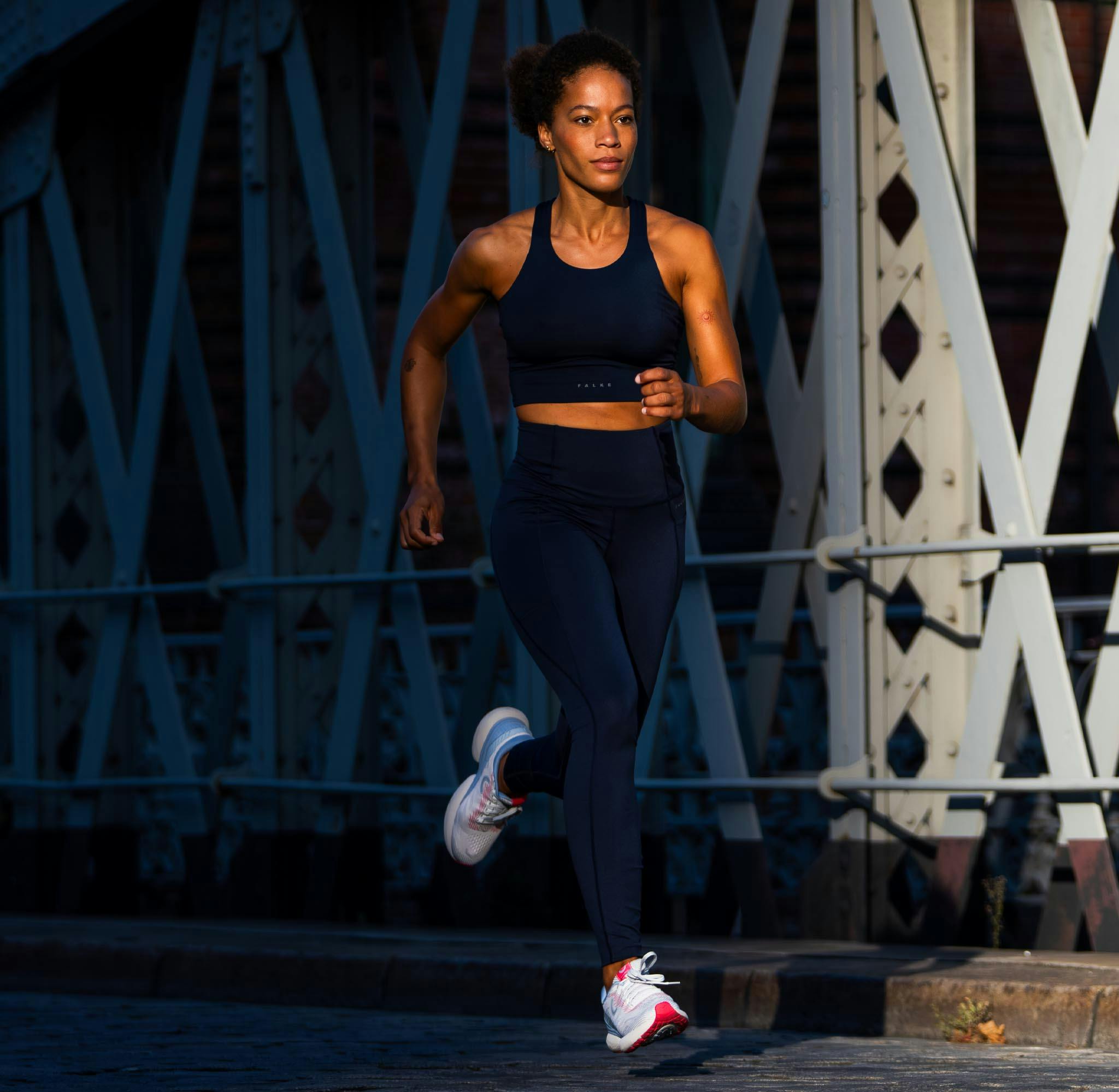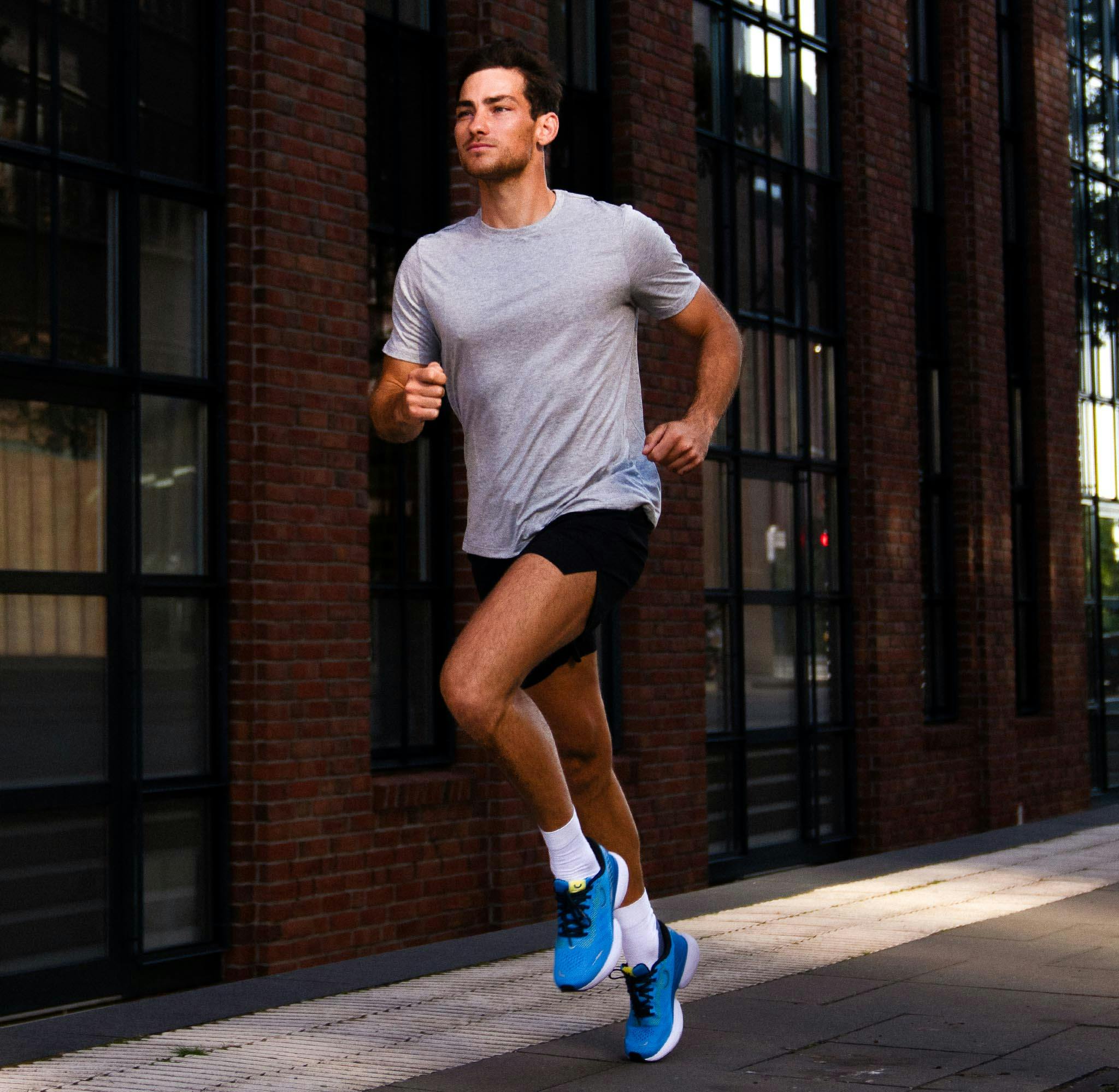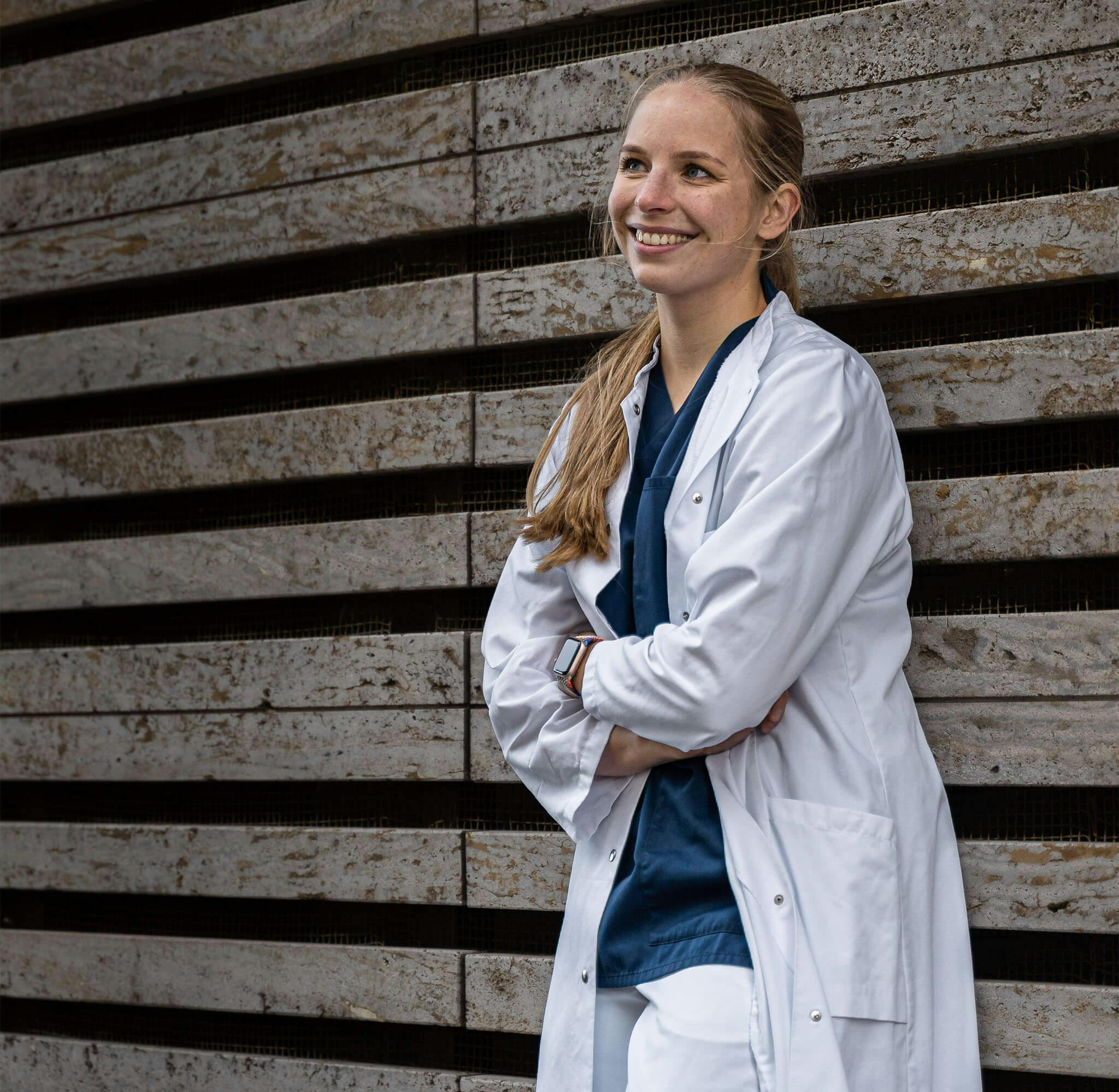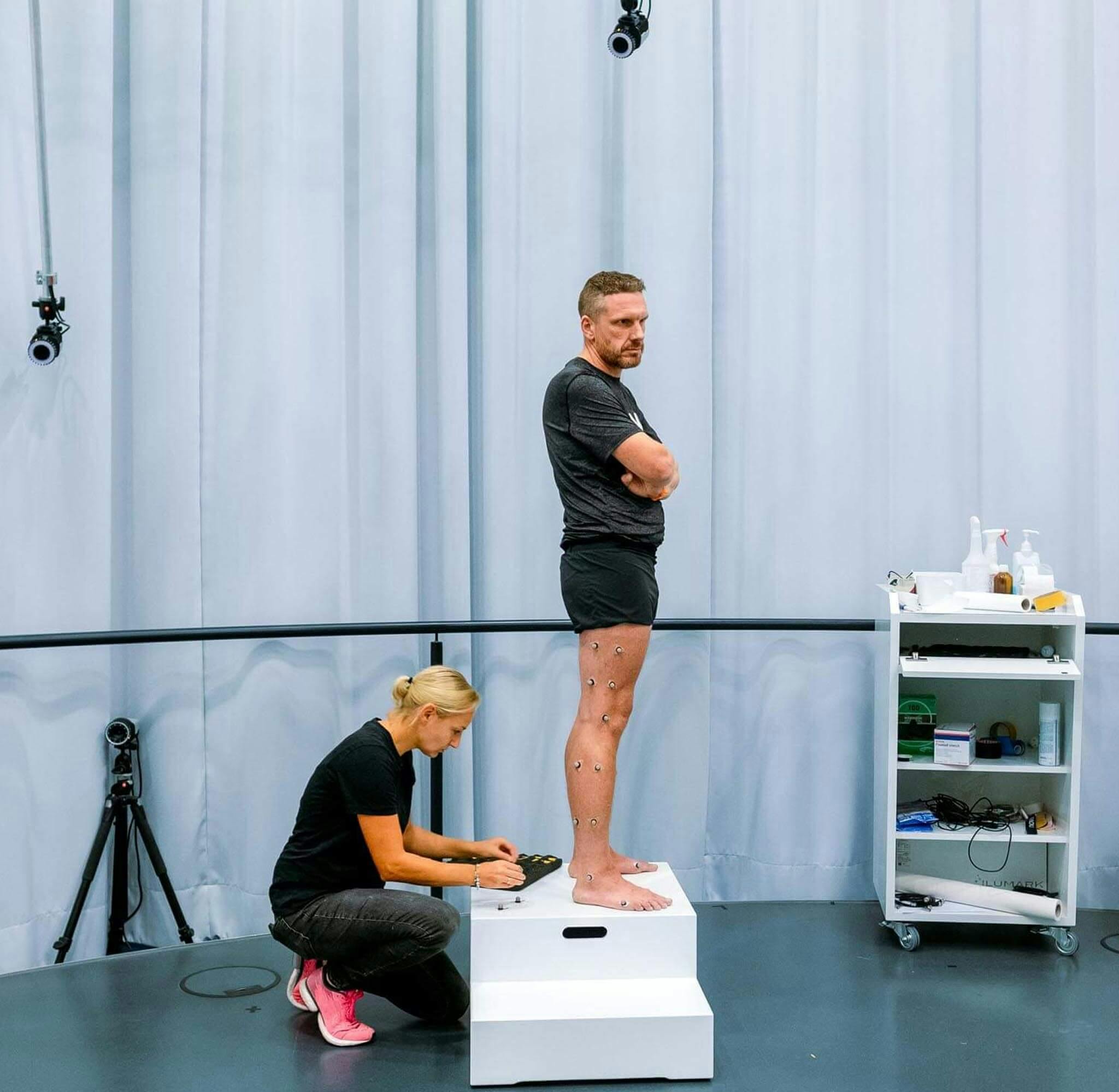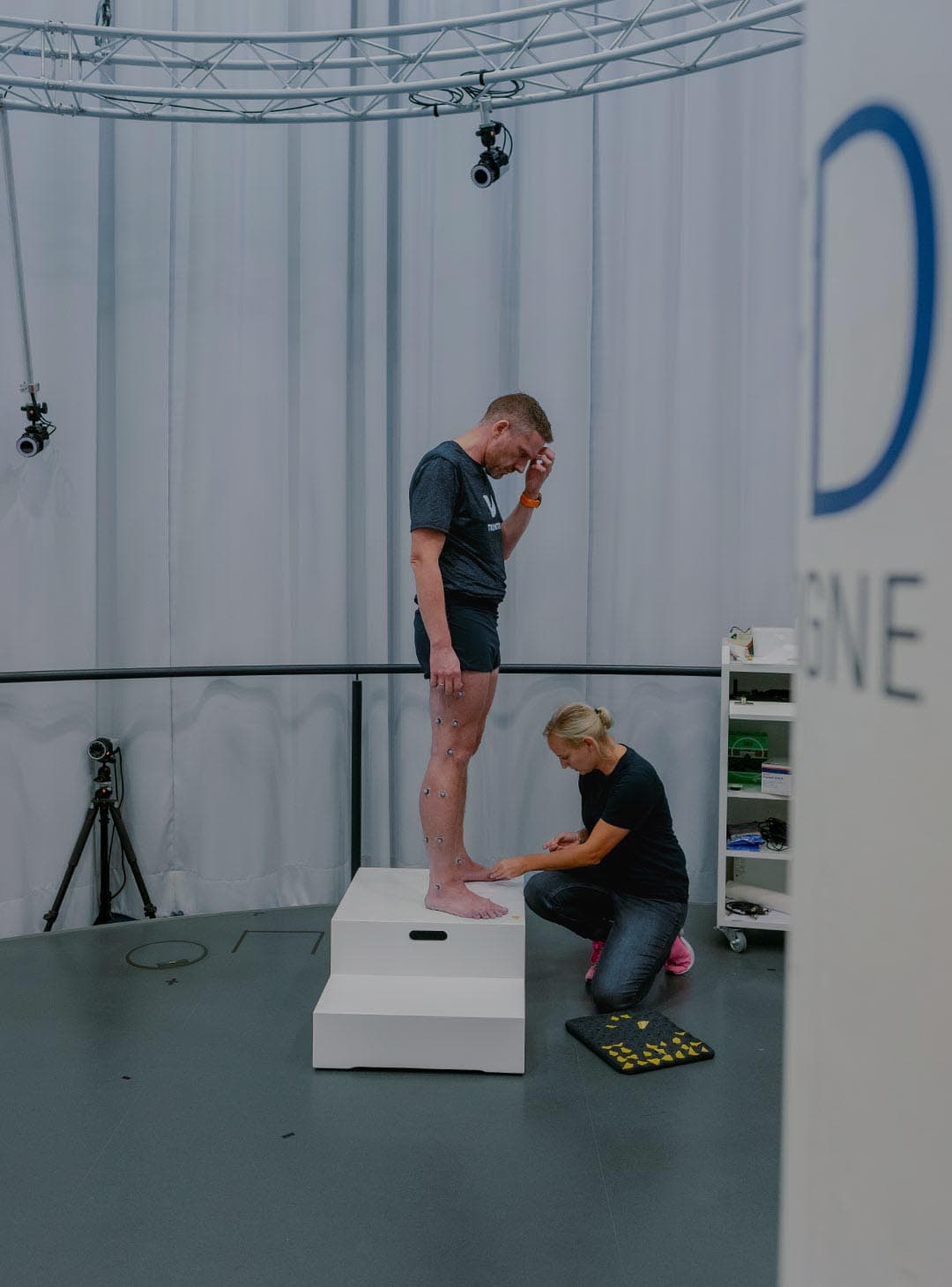

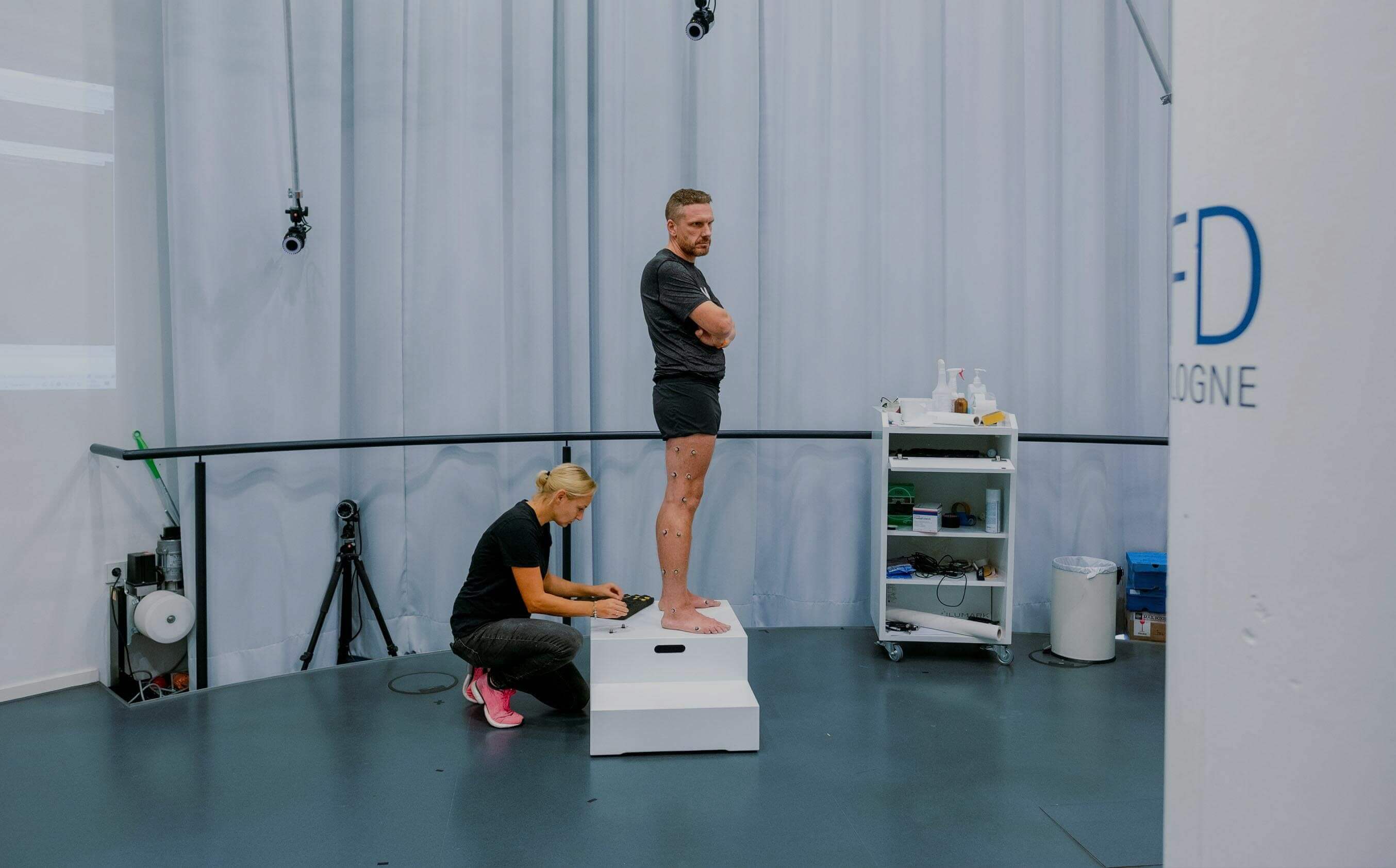

MORE RESEARCH FOR FEWER INJURIES:
RUN BETTER PROJECT
50% of all runners still get injured at least once a year. That’s 12 million people in Germany alone.[1] The results are pain, rest periods, missed training and races. That’s exactly what we want to change. Because our dream is that we can all run when, where, and how we want. Carefree. And with a lot of joy. In other words: fewer injuries – more running wow. That’s has been our vision since we founded True Motion in 2018.
But what has changed? What has remained? We’ve done research, analyzed, questioned, and tested, and we went to the lab to study the running motion. The result is a journey through time of running shoe developments and technologies that allows us to connect the dots and thus shape the future of running. Join us on this journey. Experience our Run Better Project. First-hand.
READ THE FULL STORY BELOW, WITH A NEW CHAPTER EVERY WEEK.
CHAPTER 1 ________
FROM HUNTING AID TO THE MOST IMPORTANT RUNNING TOOL:
WHY WE RUN IN RUNNING SHOES TODAY
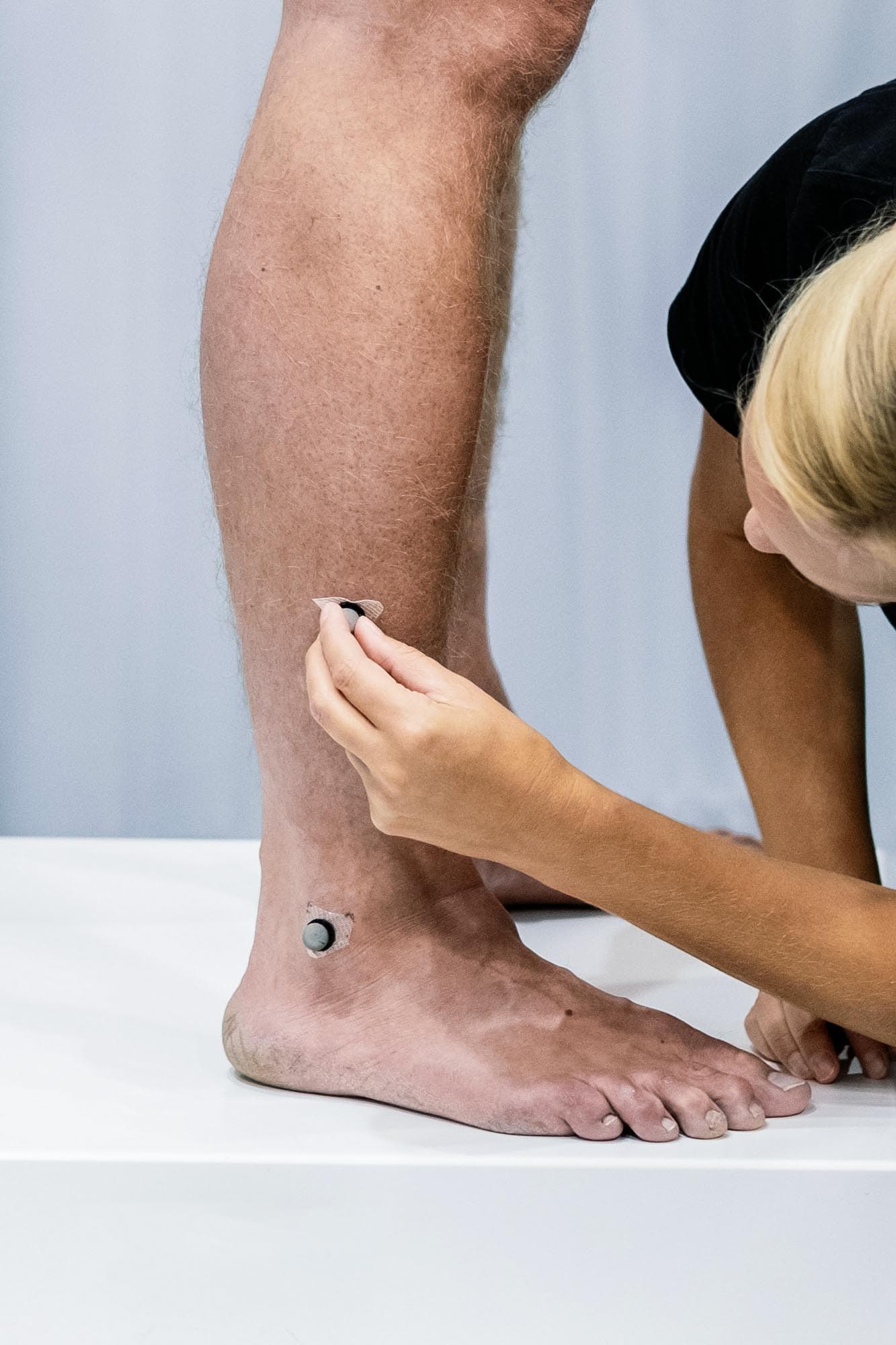
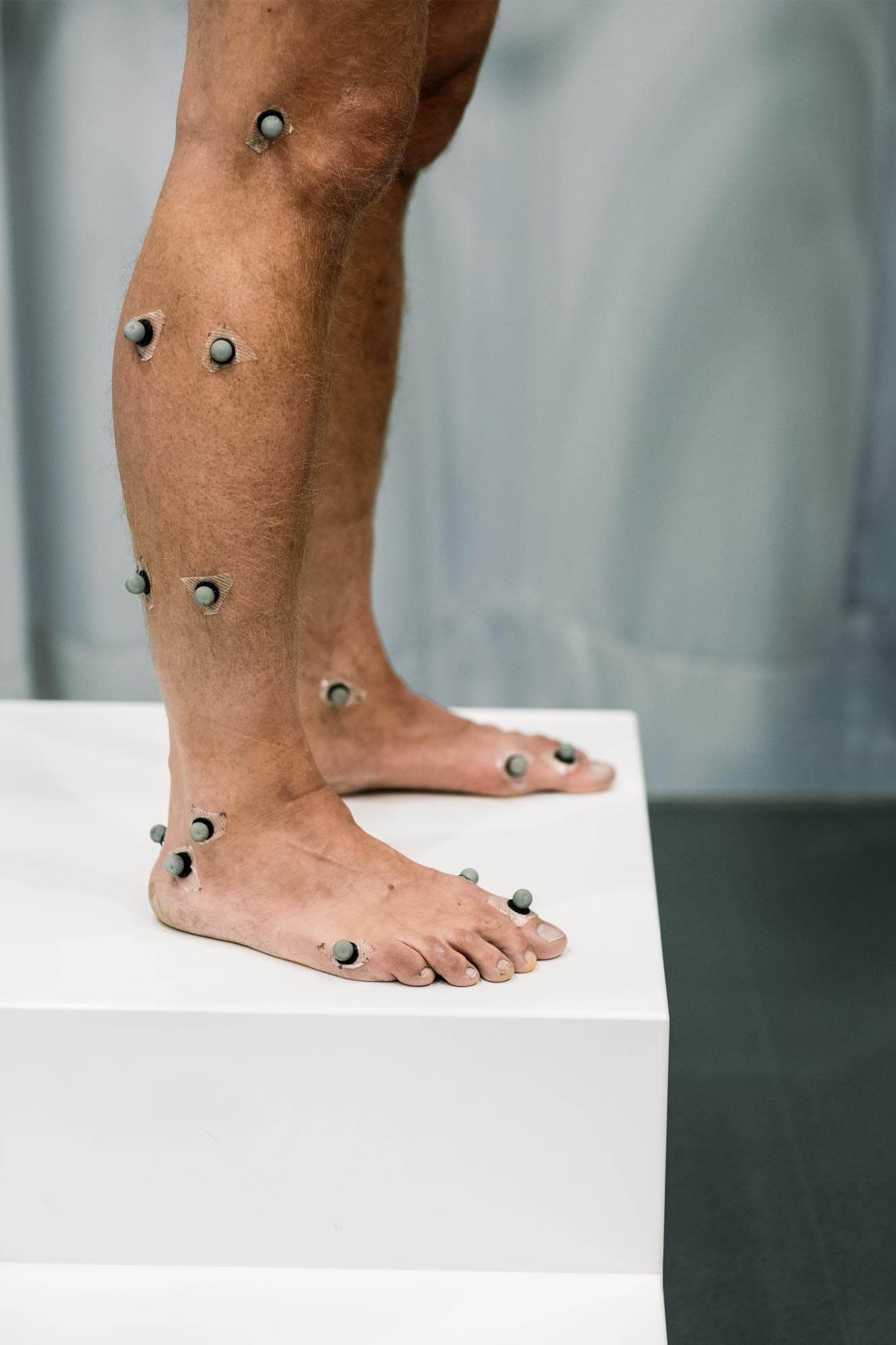
Protection from water and dirt, from heat and cold. For more comfort or faster times. From hunting tool to running tool, there are plenty of reasons why we run in shoes today. Together, we look back hundreds of years – to a time when people wearing shoes still looked like beings from the future. A journey through the history of (running) shoes. Read chapter 1 today.
CHAPTER 2 (PART 1) ________
NEUTRAL, SUPPORT, ROCKER, U-TECH™:
HOW DIFFERENT MIDSOLE TECHNOLOGIES CAME ABOUT
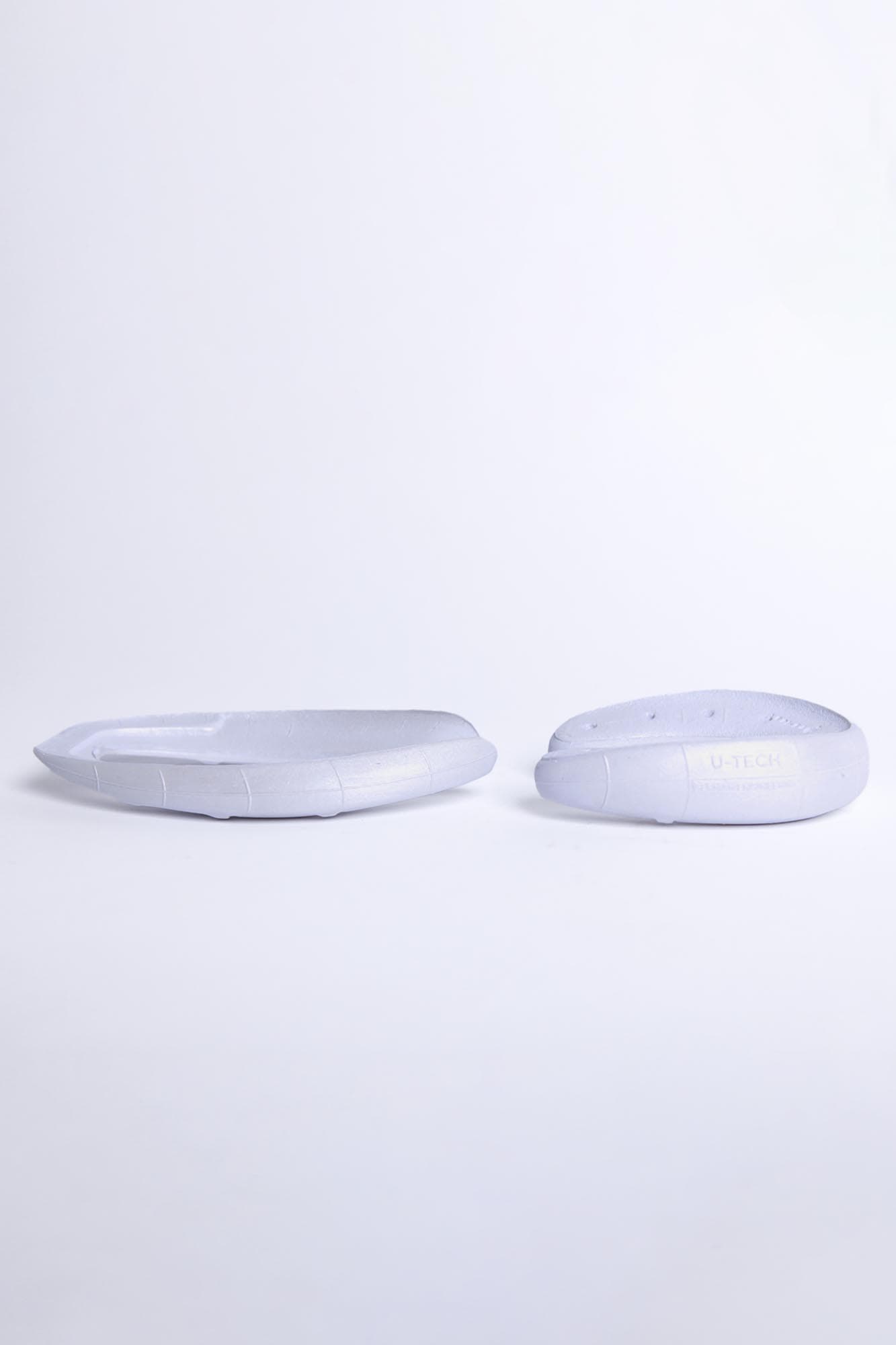
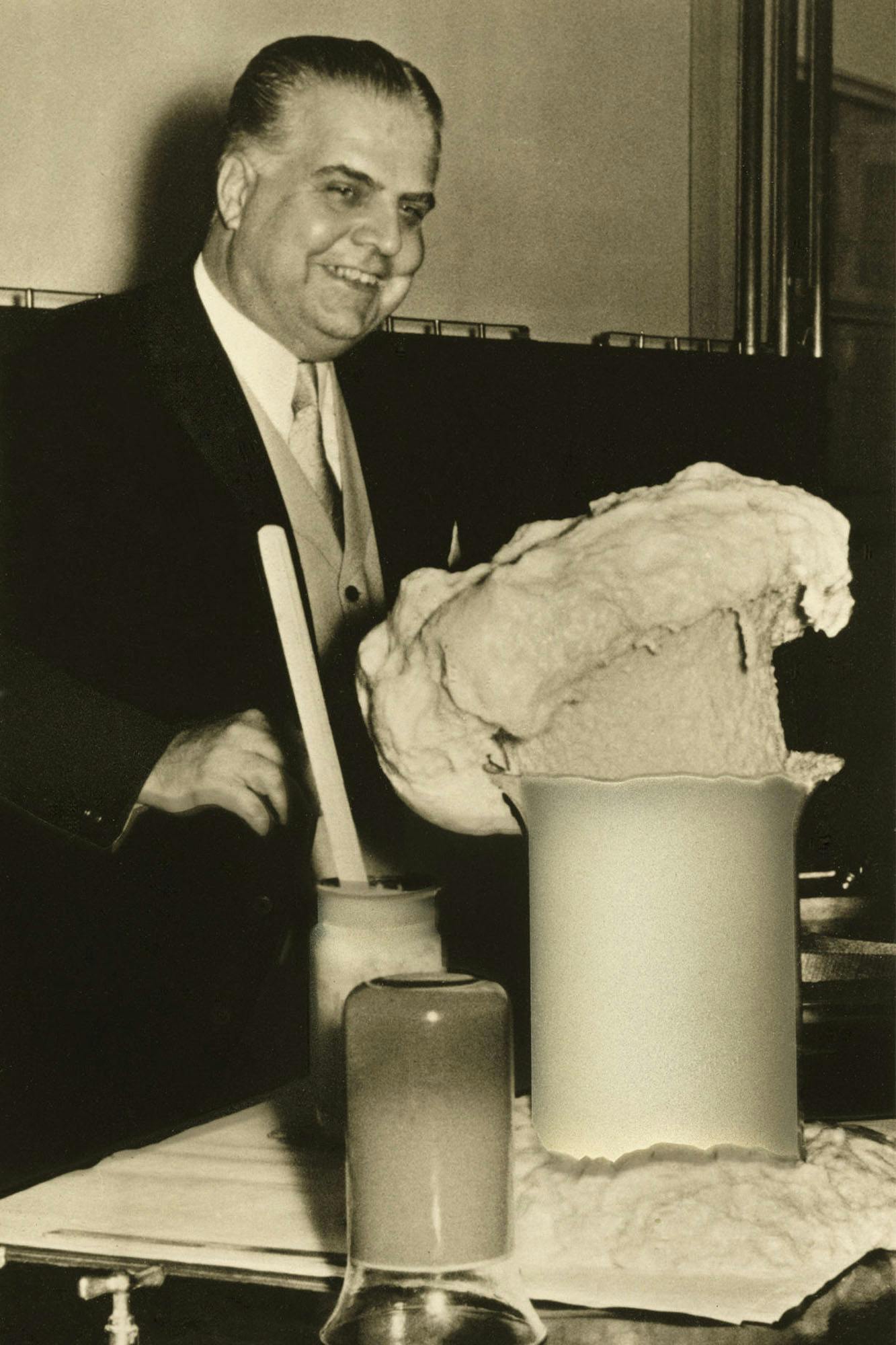
Photo: Bayer AG / Alamy.com
One look at the shoe wall in a specialty running store will suffice to see that running shoes differ not only by brand, model, or color. Above all, they are also distinguished by sole technology. Because when it comes to running, it is crucial that the running shoe meets the runner’s demands for more comfort, more performance – or a lower risk of getting injured. Four different sole technologies currently dominate the shoe walls in specialty stores. Each with its own approach. Learn more about neutral, support, rocker, and U-TECH™ sole technologies. Why were they developed, how do they differ from each other – and what do they aim to do for us as runners?
CHAPTER 2 (PART 2) ________
MIDSOLE TECHNOLOGIES TO THE TEST:
WHICH RUNNER'S NEEDS CAN THEY REALLY MEET?
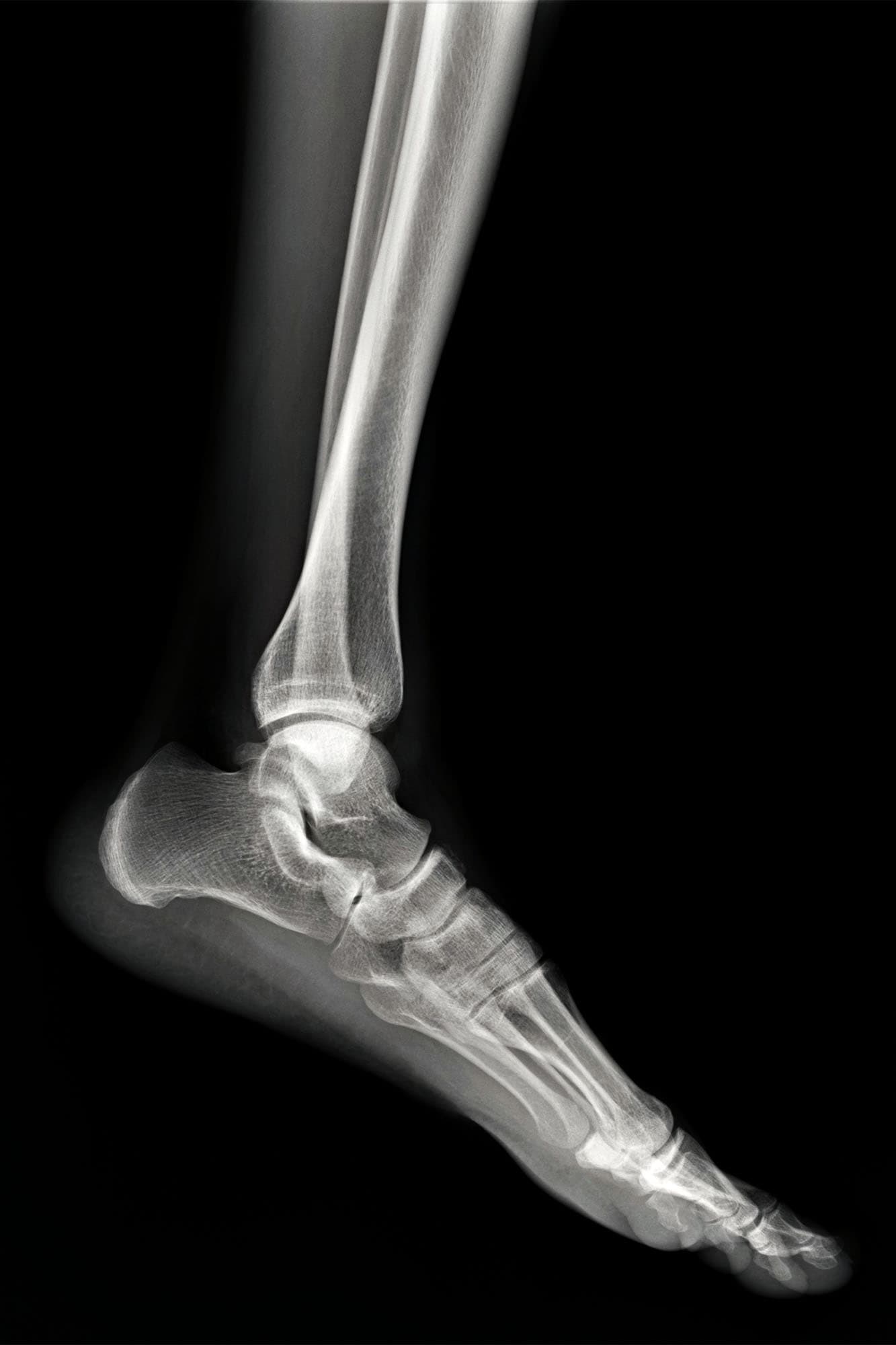
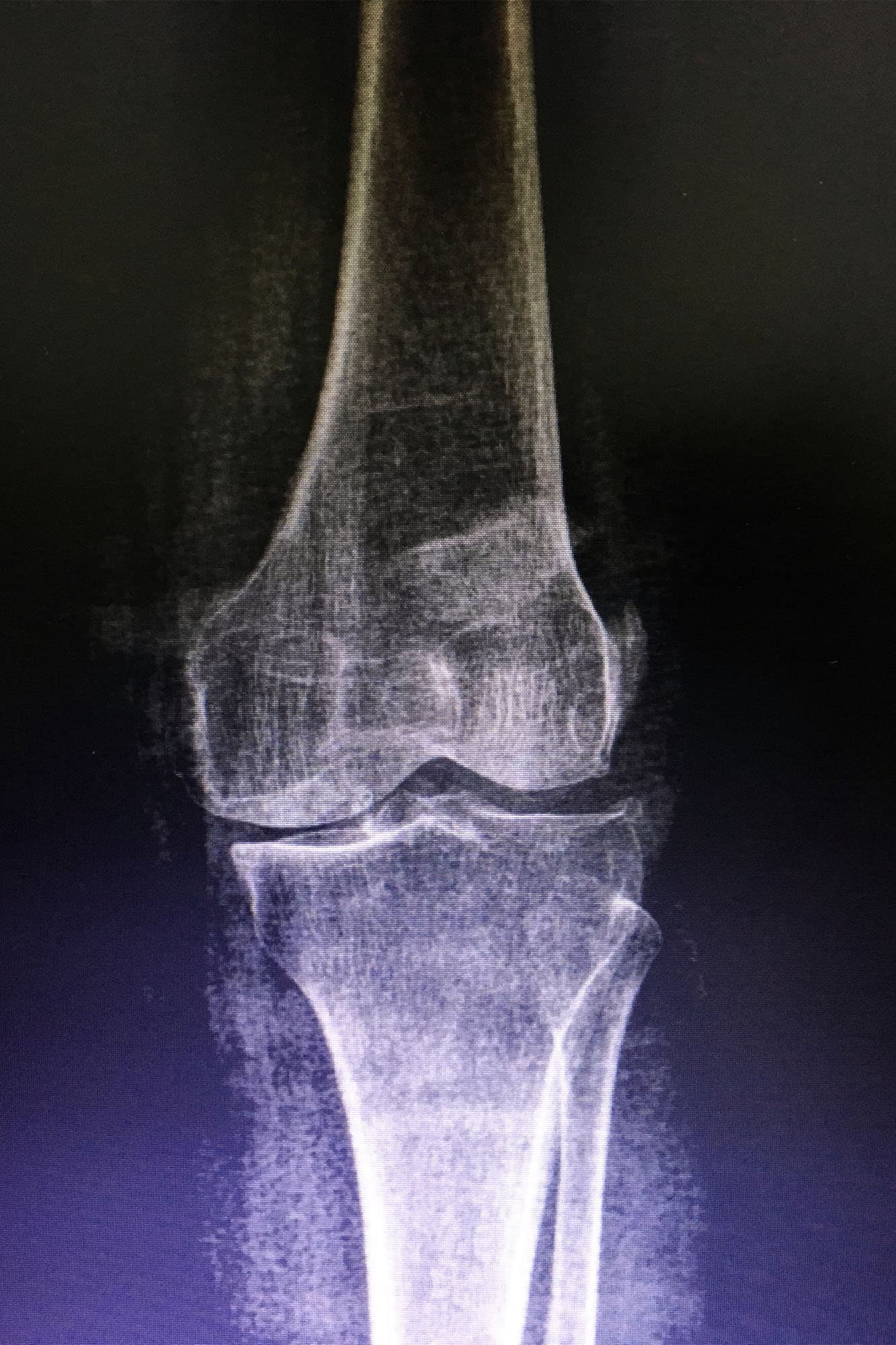
Photos: Shutterstock.com
Neutral, Support, Rocker and U-TECH™: All four midsole technologies are designed to help runners make their runs better, more comfortable or healthier - with posts, carbon plates, maximum cushioning, minimum cushioning or a horseshoe shape. Different ideas for different needs. But which technology might help meet my individual needs? Studies from all over the world provide impressive results.
CHAPTER 3 (PART 1) ________
UPPER, MIDSOLE FOAM, FIT:
WHAT MAKES OUR RUNNING SHOES TRULY COMFORTABLE
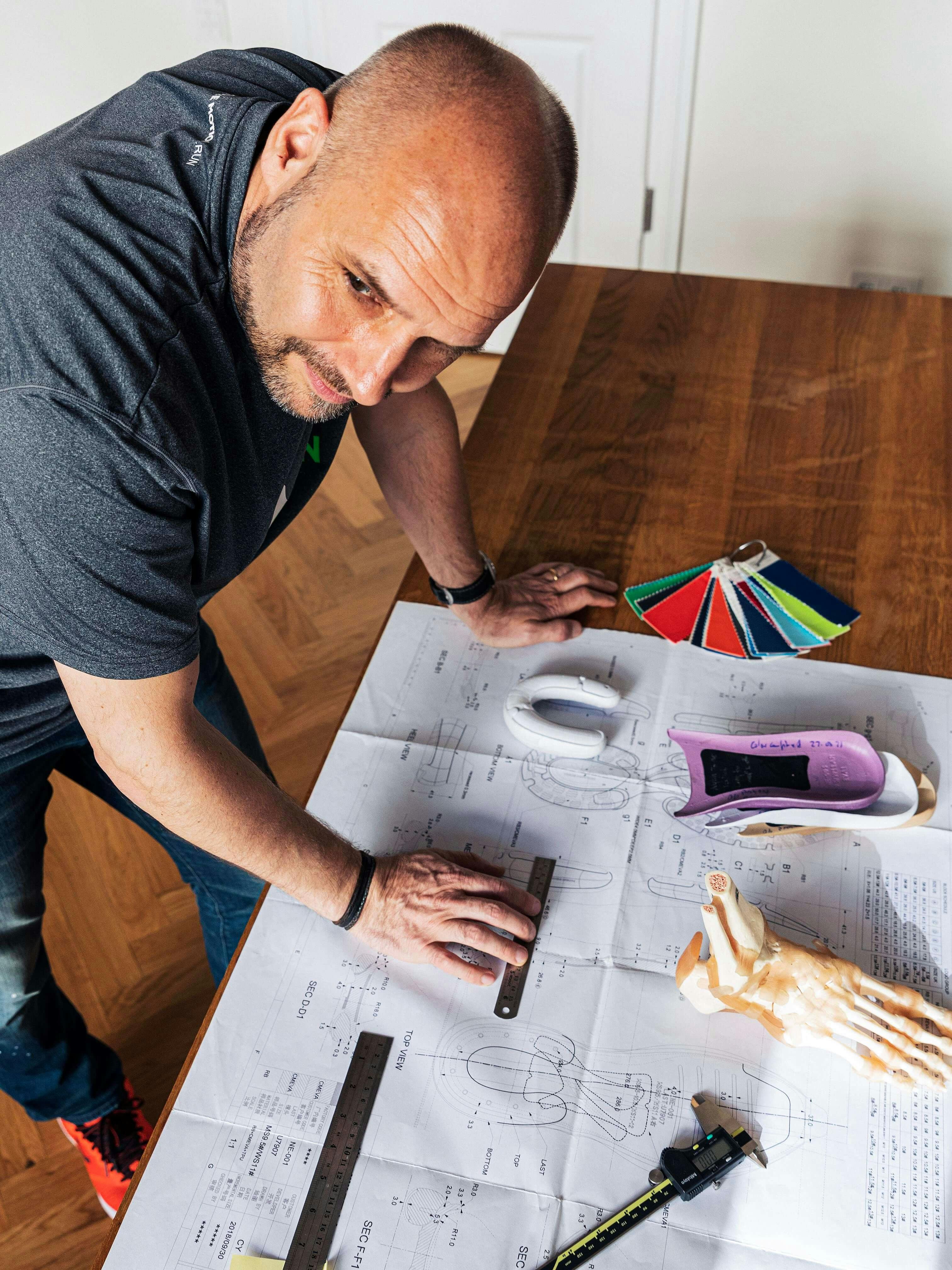
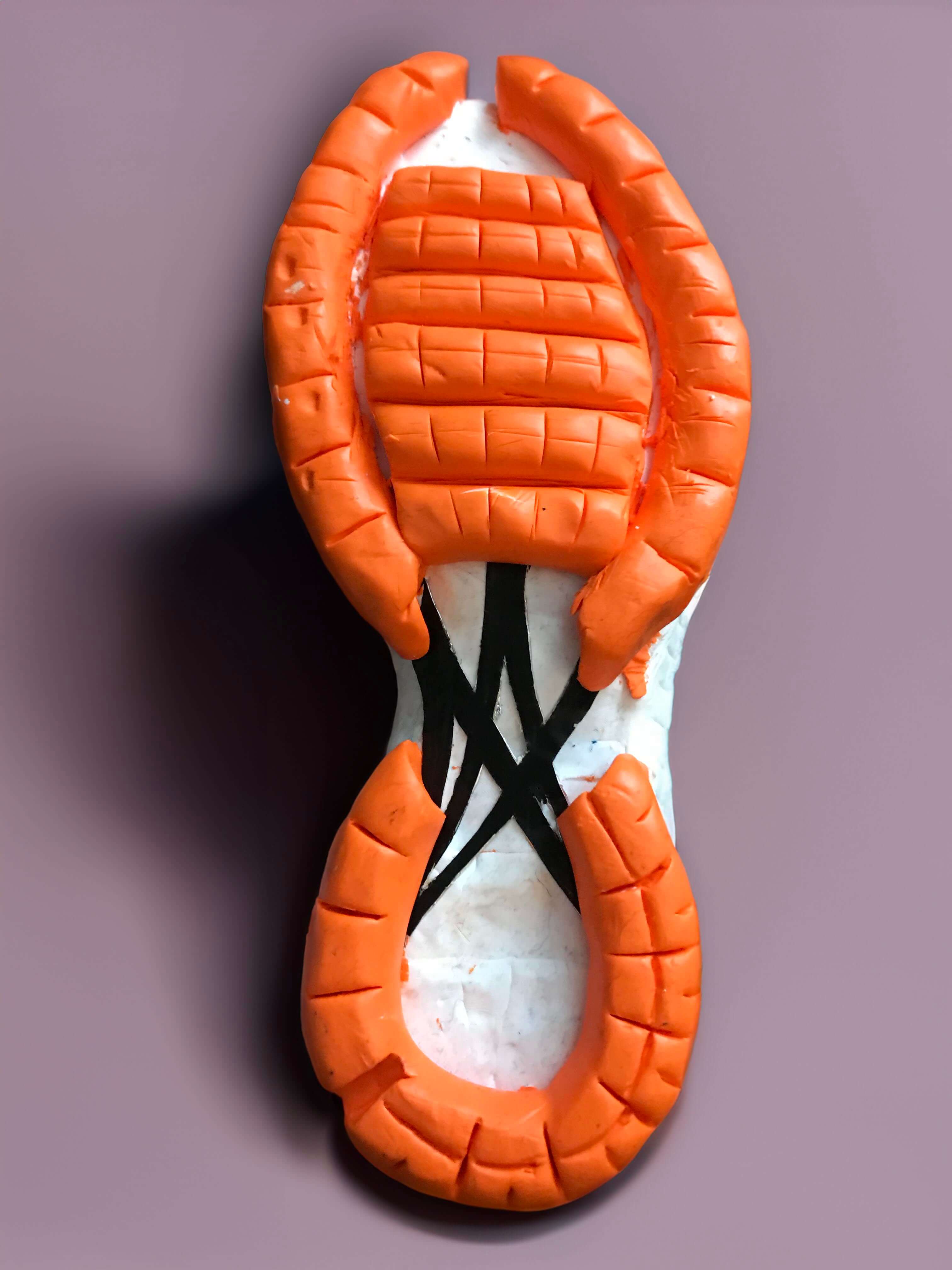
The perfect running shoe? Different for everyone. The first impression, the first time you slip them on, is crucial. Despite our individuality – this is exactly where we runners are not all that different after all. Because we all love comfort. Reason enough for running shoe manufacturers to start here, to develop comfort anew and to think it further. Thick midsoles, comfortable uppers, padded collars, an optimized fit – there are endless ways to make a running shoe as comfortable as possible. However, comfort is subjective, difficult to measure, and depends – precisely – on our individual perception as runners. An excursion into comfort. Learn more in Chapter 3 (Part 1).
CHAPTER 3 (PART 2) ________
TV HOST AND RECREATIONAL RUNNER SEBASTIAN HELLMANN:
“IT JUST HAS TO FEEL COMFORTABLE“
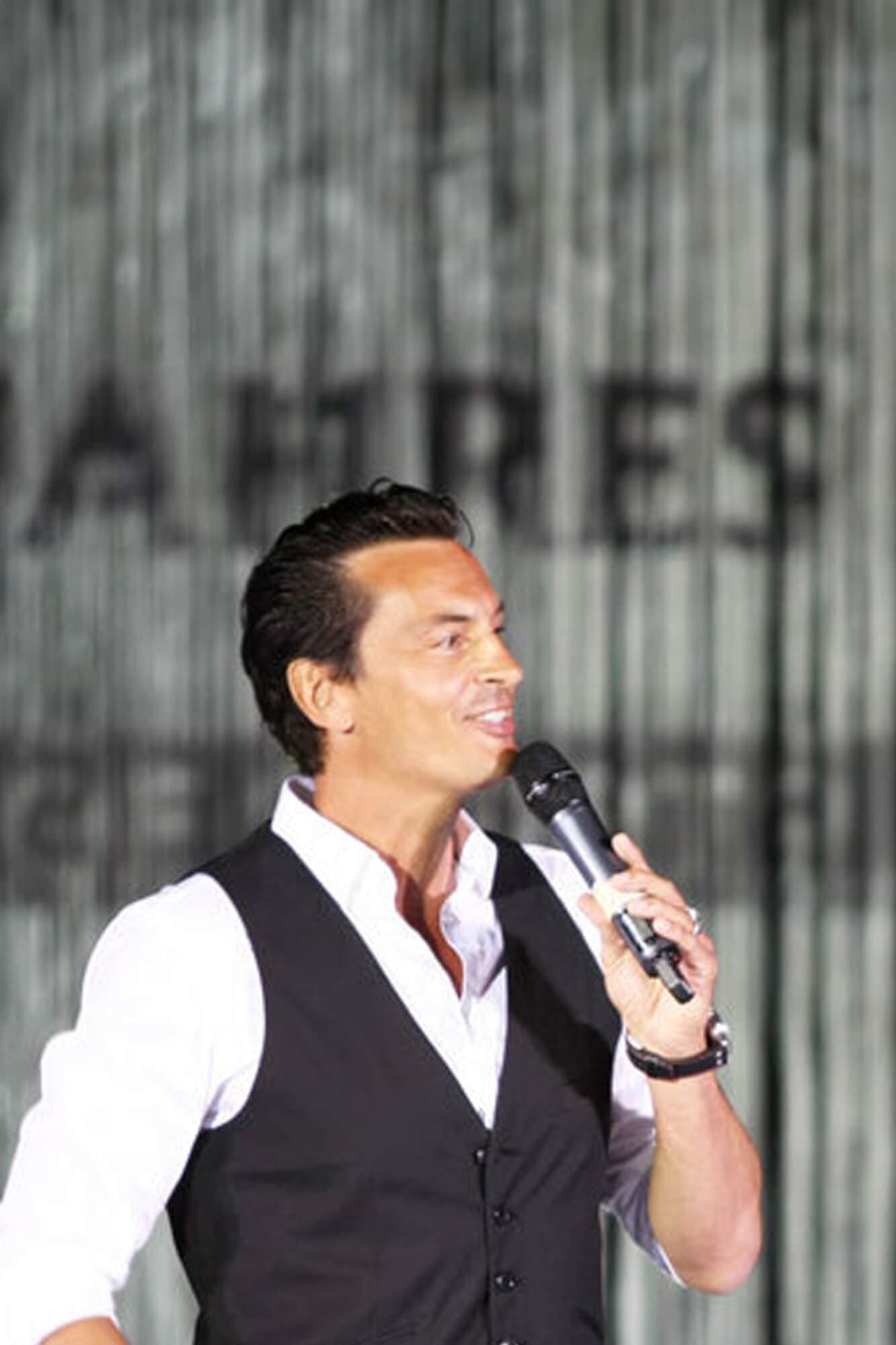
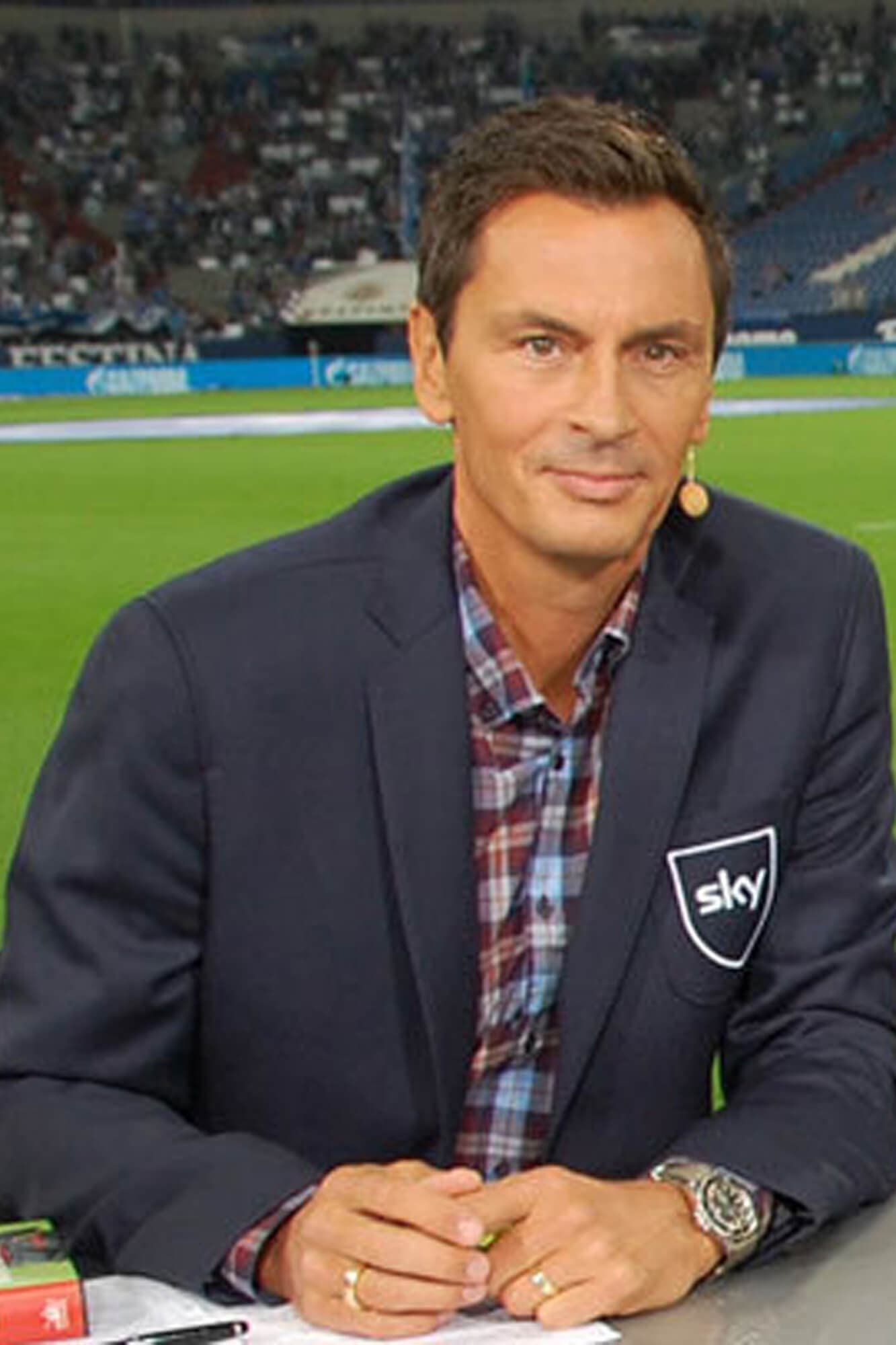
Photos: Sebastian Hellmann
Running a lap through the park – preferably in the morning, before the day really begins. For TV host Sebastian Hellmann, it’s simply a part of his routine. Two or three times a week, but not against the clock. For the 55-year-old, other things are more important when running. “I can relax, think things through, and get fit in the process,” he explains. What else fascinates him about running and why he thinks comfort is particularly important. A portrait.
CHAPTER 4 (PART 1) ________
IT‘S ALL A QUESTION OF (TOO MUCH) STRESS:
WHY WE GET INJURED WHILE RUNNING
Our running shoes are lying around unused, our running shirt is hanging in the closet. Actually, we would be outside right now, running a lap in the park. But not today, and unfortunately not all of last week. An injury stopped us. Our left knee is causing problems. But why is that? Why do we get injured when we run? And what should we pay attention to when running in order to stay healthy? A look at how the human body works solves the mystery.
CHAPTER 4 (PART 2) ________
HOW WE CAN QUICKLY LACE UP OUR RUNNING SHOES AGAIN:
WHAT TO DO WHEN WE ARE INJURED?
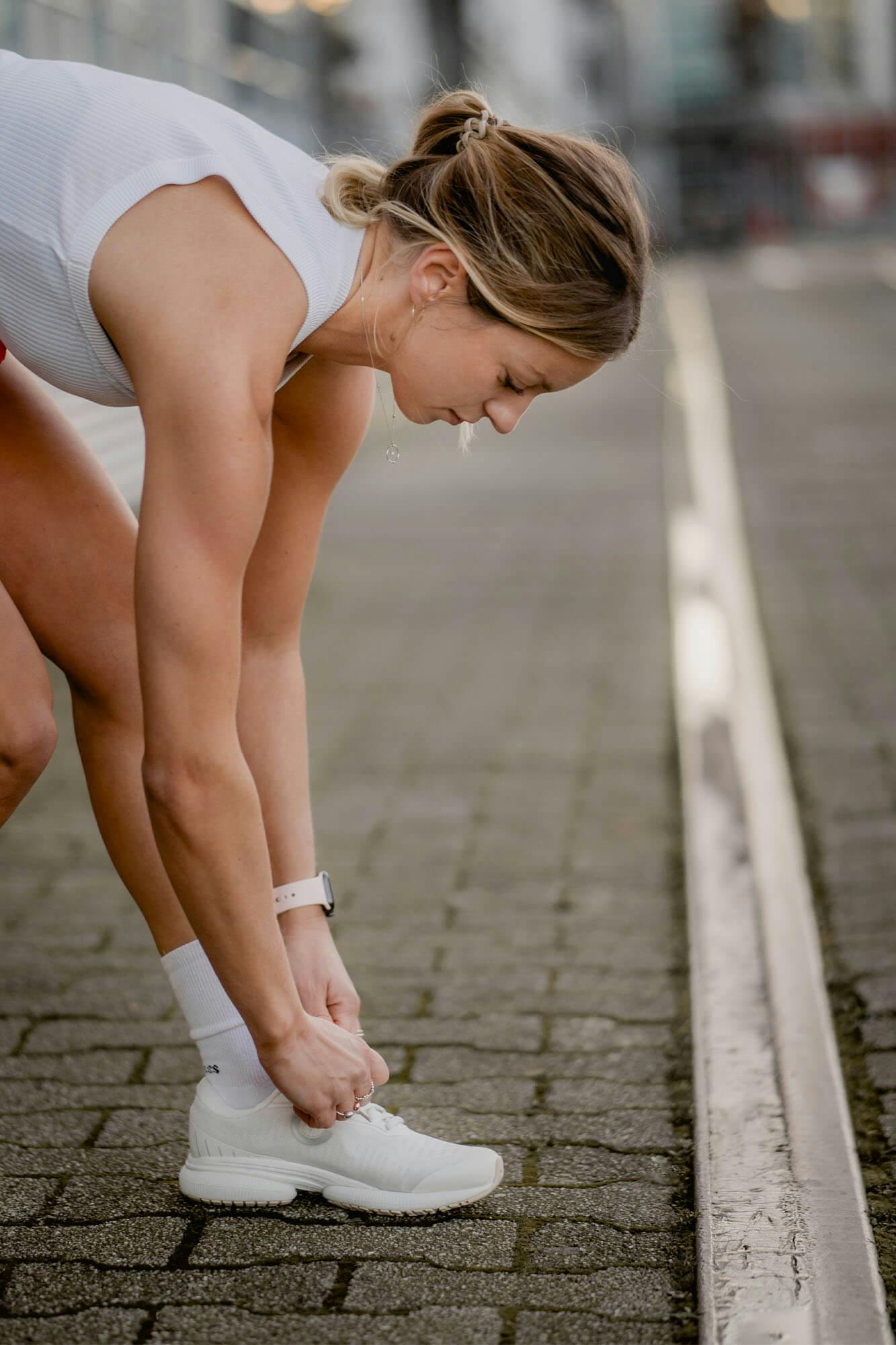
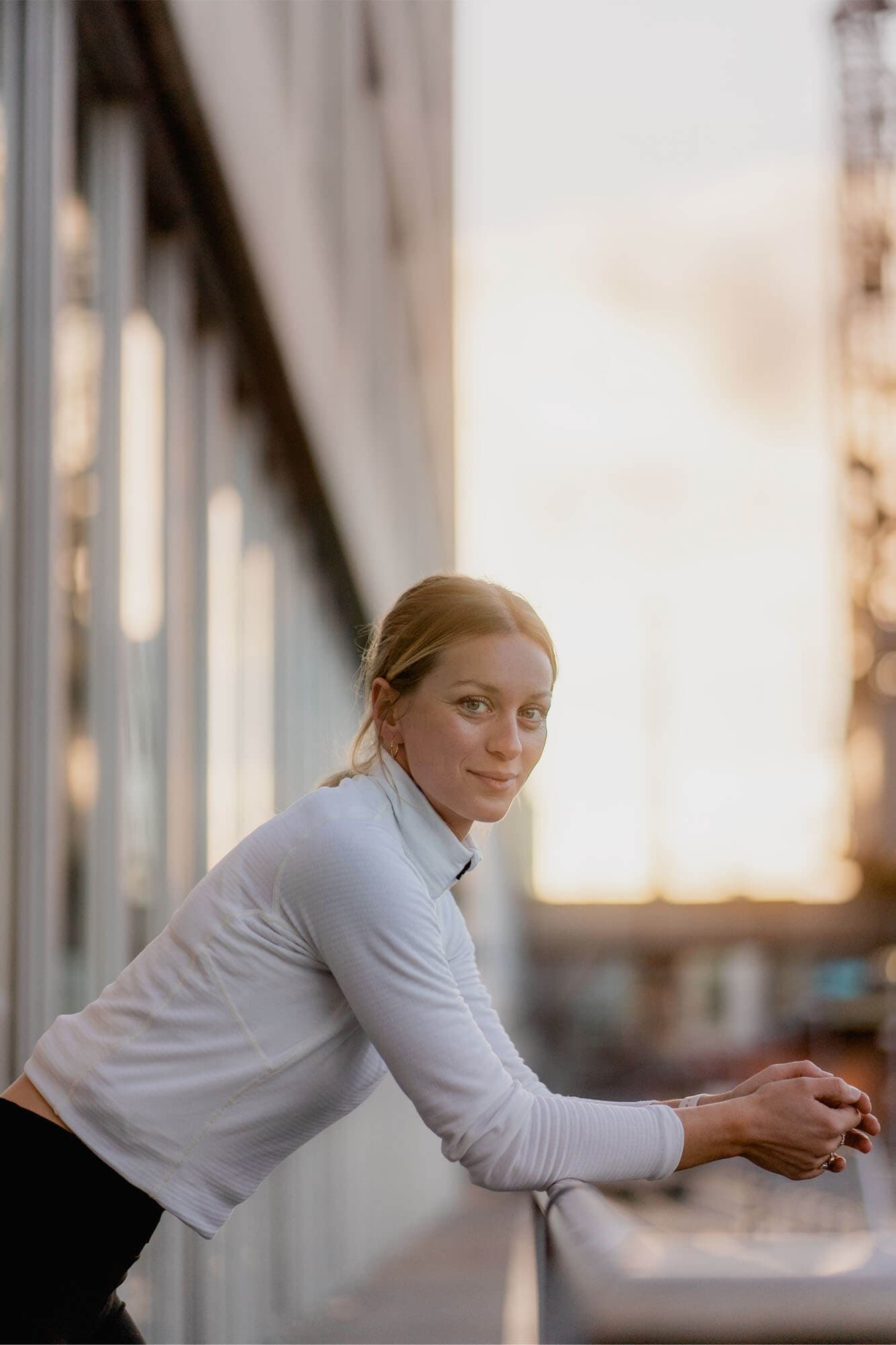
If we feel pain while running, there is only one reasonable consequence for us at first, to interrupt our training and reduce the acute load on the affected area. If the discomfort or even pain does not go away or keeps coming back, we have little choice but to seek medical help. We need a reliable diagnosis in order to act accordingly and avoid more serious secondary injuries. What it means for us as runners to be injured, how we can get fit again as quickly as possible, and how important it is to heal injuries completely – a look at the treatment approaches of physiotherapy reveals it.
CHAPTER 5 (PART 1) ________
INTRODUCING THE RUN BETTER RESEARCH STUDY:
HOW RUNNING SHOES INFLUENCE INJURIES
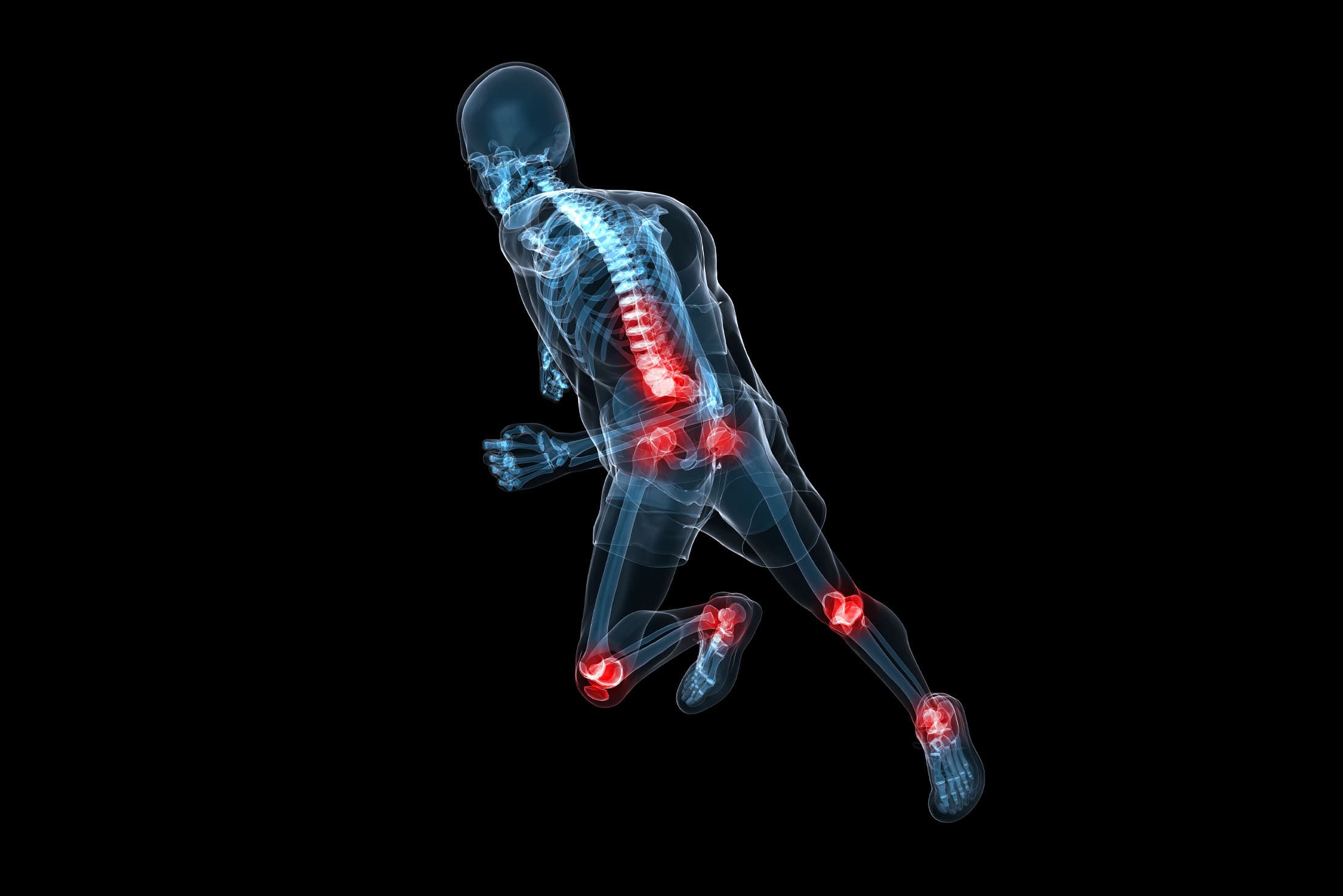
Running: a sport that gives us freedom. Whether alone or in a group. Whether in the morning, at noon or in the evening. We can run wherever and whenever we want. Usually. The only thing we actually need: our running shoes. It is important that we wear running shoes that suit us, that feel comfortable, and most importantly, ones in which we are less likely to injure ourselves. Running shoes have a decisive influence on our risk of injury while running, because they can significantly reduce that risk. This is shown by the results of a recent study, the Run Better Research Study. How exactly the study went, who accompanied it and why it is unique in its size.
CHAPTER 5 (PART 2) ________
RUN BETTER RESEARCH STUDY:
U-TECH™ REDUCES THE RISK OF RUNNING INJURIES BY MORE THAN 50%
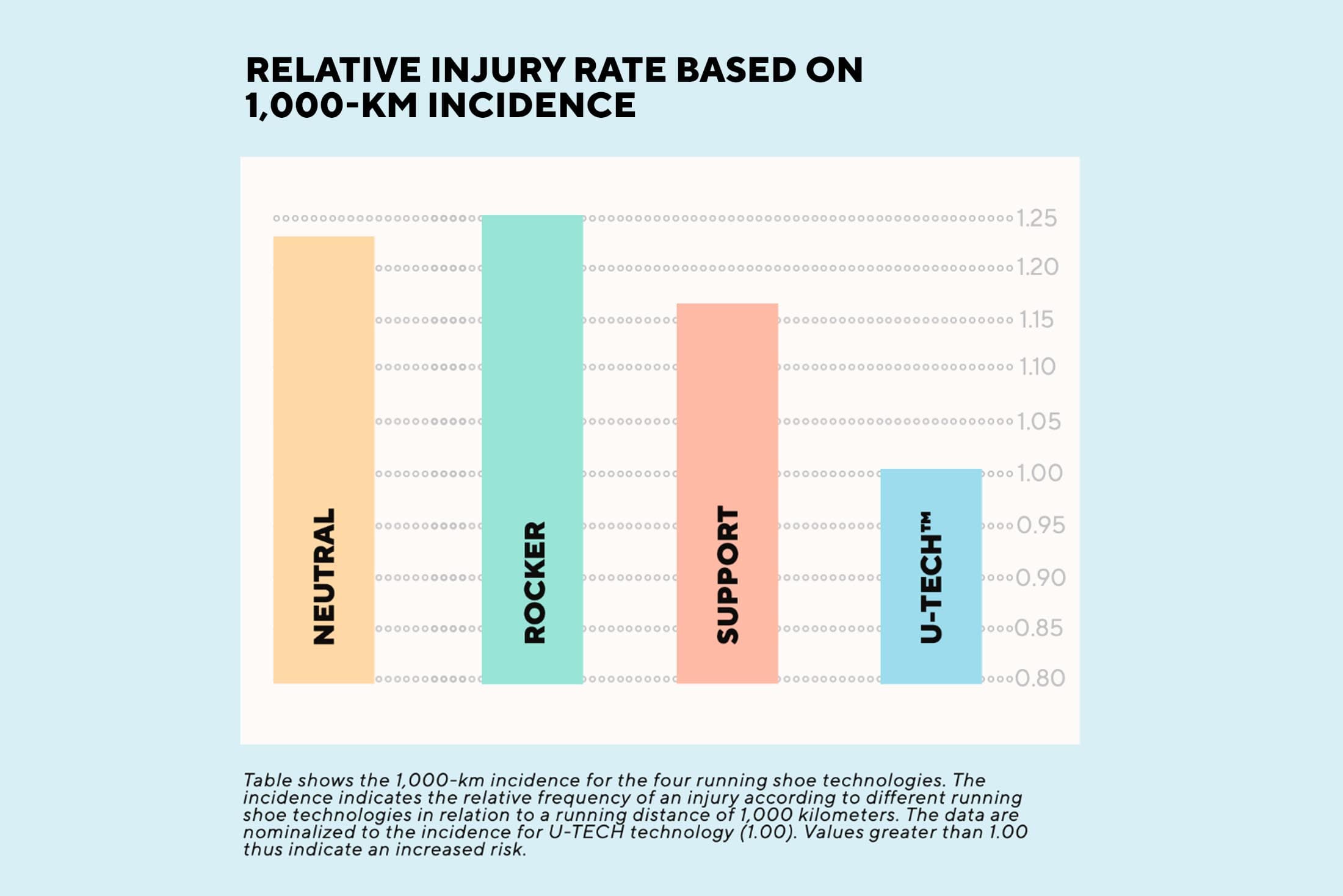
Reducing the risk of injury by more than half sounds like hard work, a lot of training, and – if we’re being honest – almost utopian. Achieving this by simply choosing the right running shoes seems far too simple at first glance. Yet the results of the Run Better Research Study show just that. Specifically, our running shoes, or, more precisely, the midsole technology we run with, influence the risk of developing running injuries. By up to 50% – particularly at the knee and Achilles tendon. Impressive findings on where we get injured, why we get injured – and what we can change. Read Chapter 5 (Part 2) for an overview.
CHAPTER 6 (PART 1) ________
ABOUT THE BEAUTY OF LEAVING OUR COMFORT ZONES:
“THIS IS FOR THE WORLD AROUND AND WITHIN US”
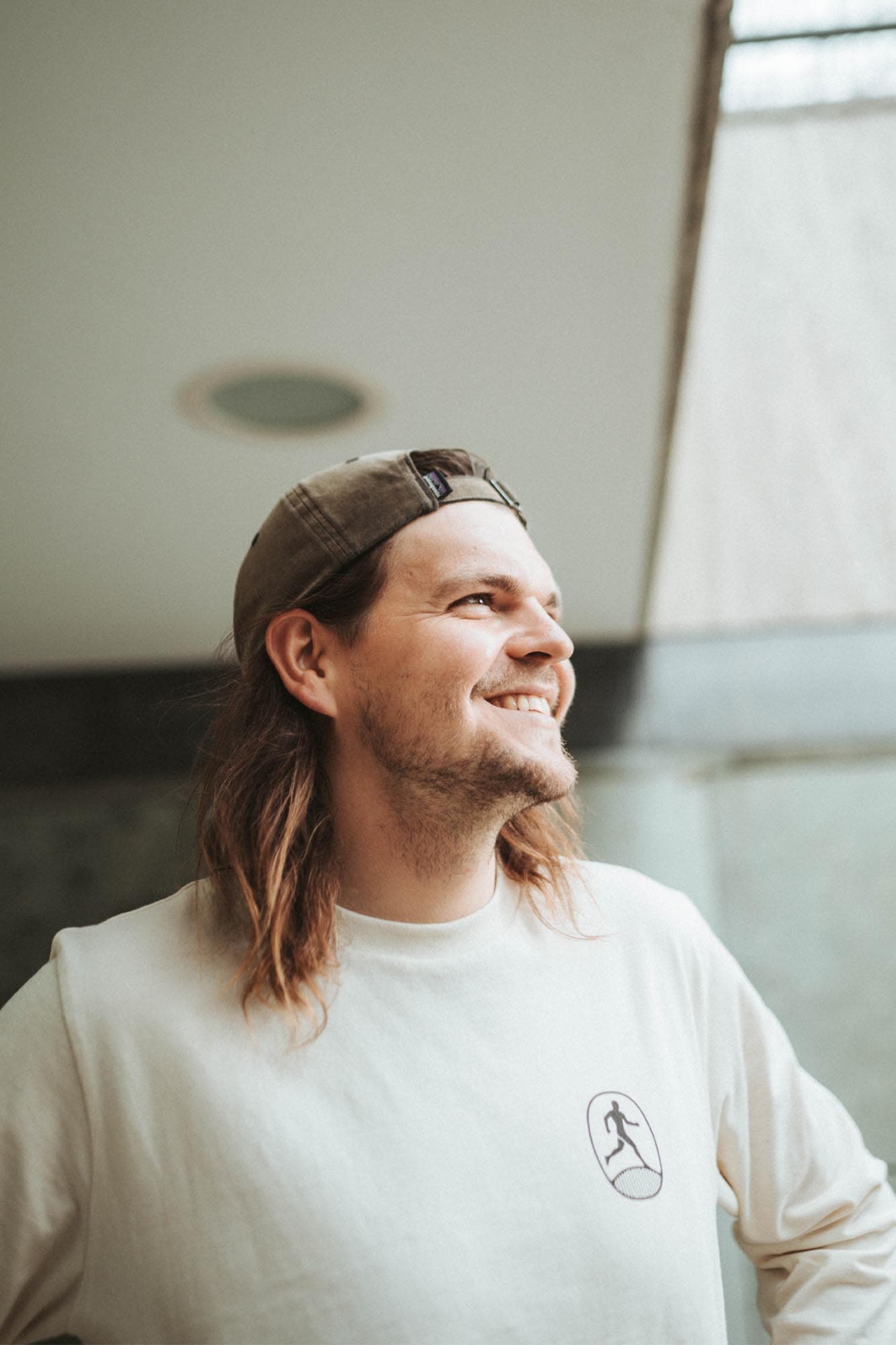
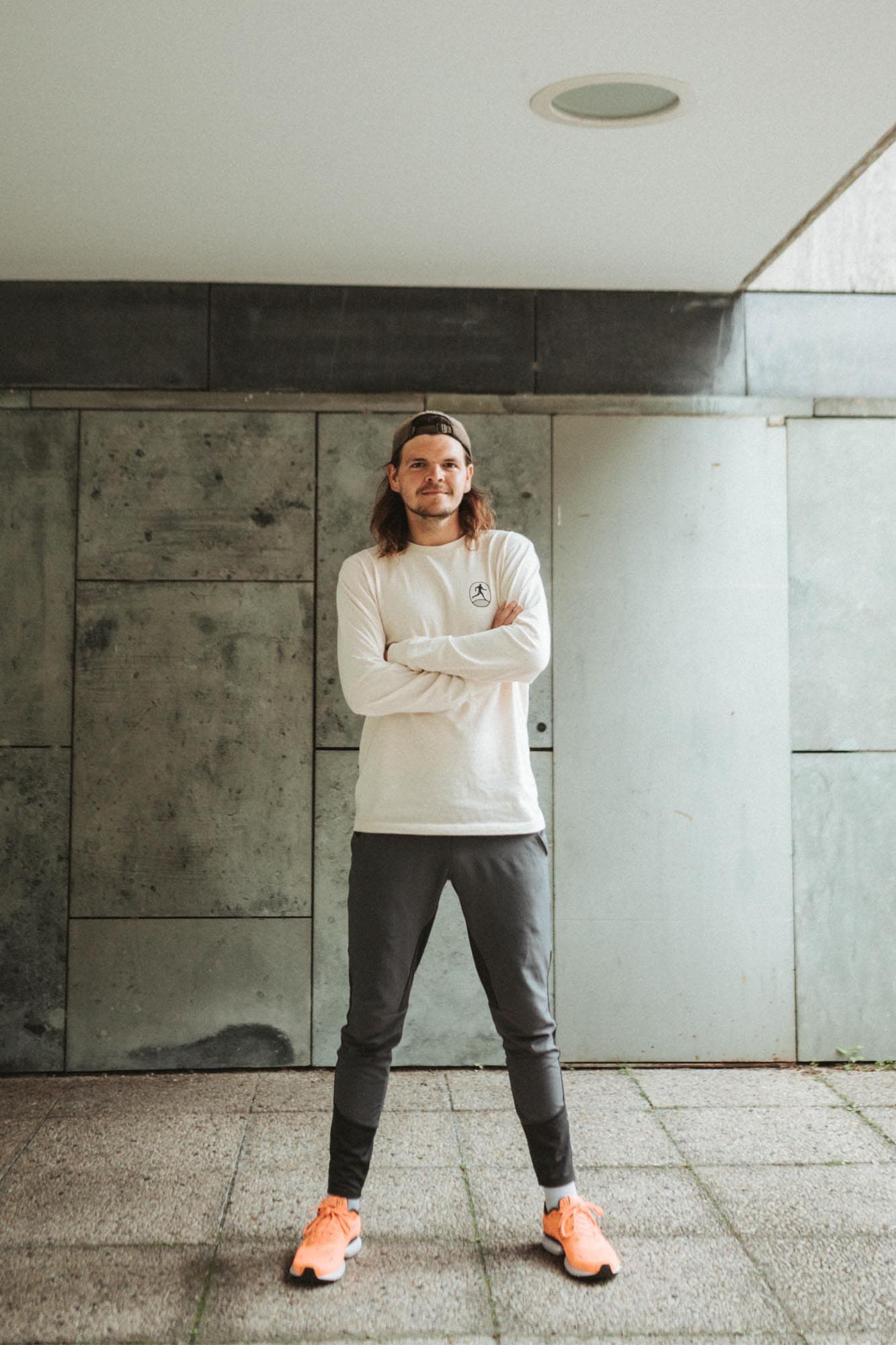
Photos: Lina Retzlaff
“I have never been a great athlete. It was only when a friend asked me to train for an Ironman that running became an area that I wanted to explore further. That I wanted to challenge myself in to see how far and fast I could get. Today, endurance sports have become a tool for me. A skill that I’ve built over years, that I know I’m good at and that I enjoy intrinsically.” About the beauty of leaving our comfort zones. Read the full story in Chapter 6.
CHAPTER 6 (PART 2) ________
U-TECH NEVOS ELEMENTS NEXT GEN:
BE IN YOUR ELEMENT – WHENEVER YOU WANT
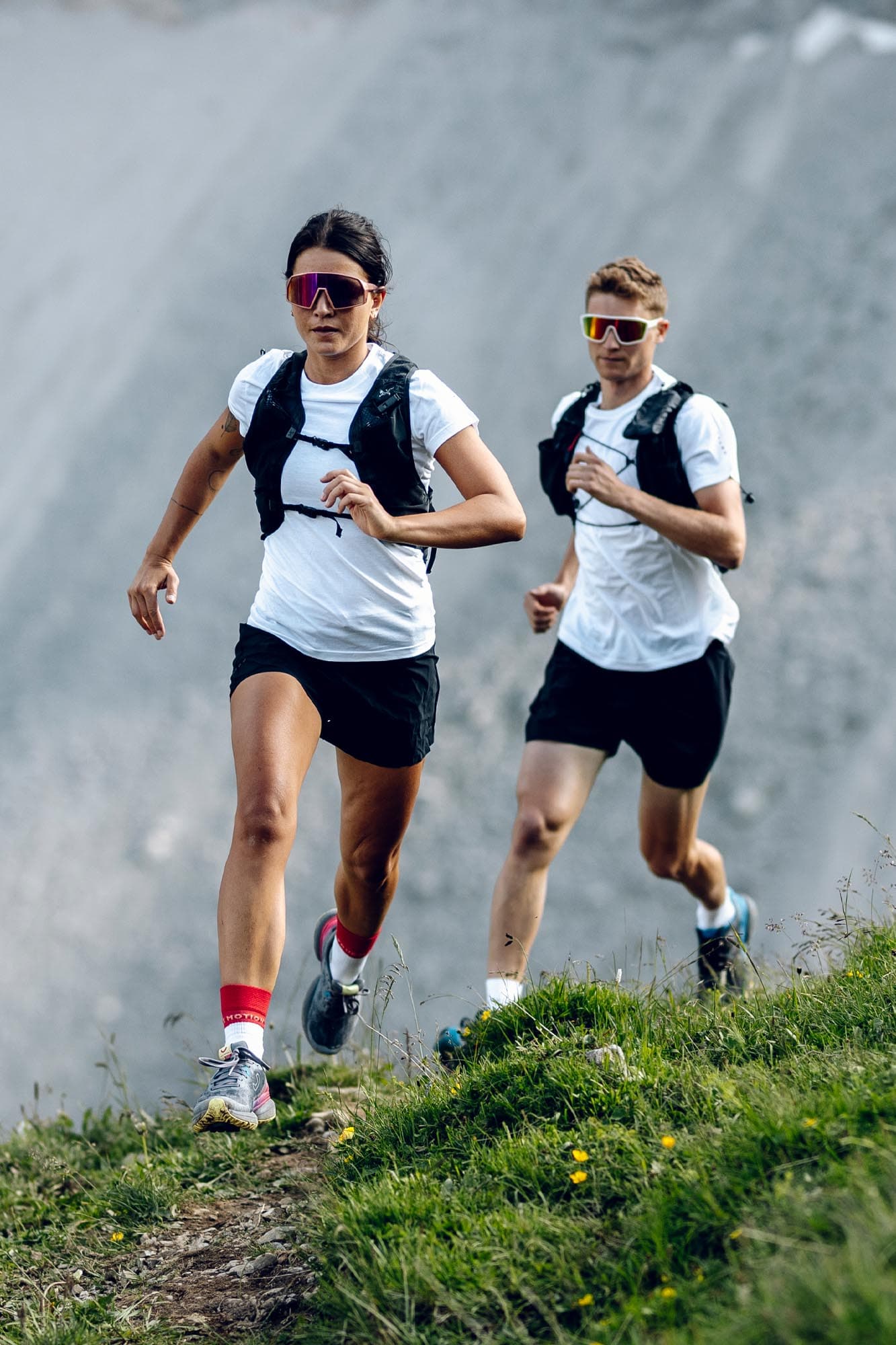
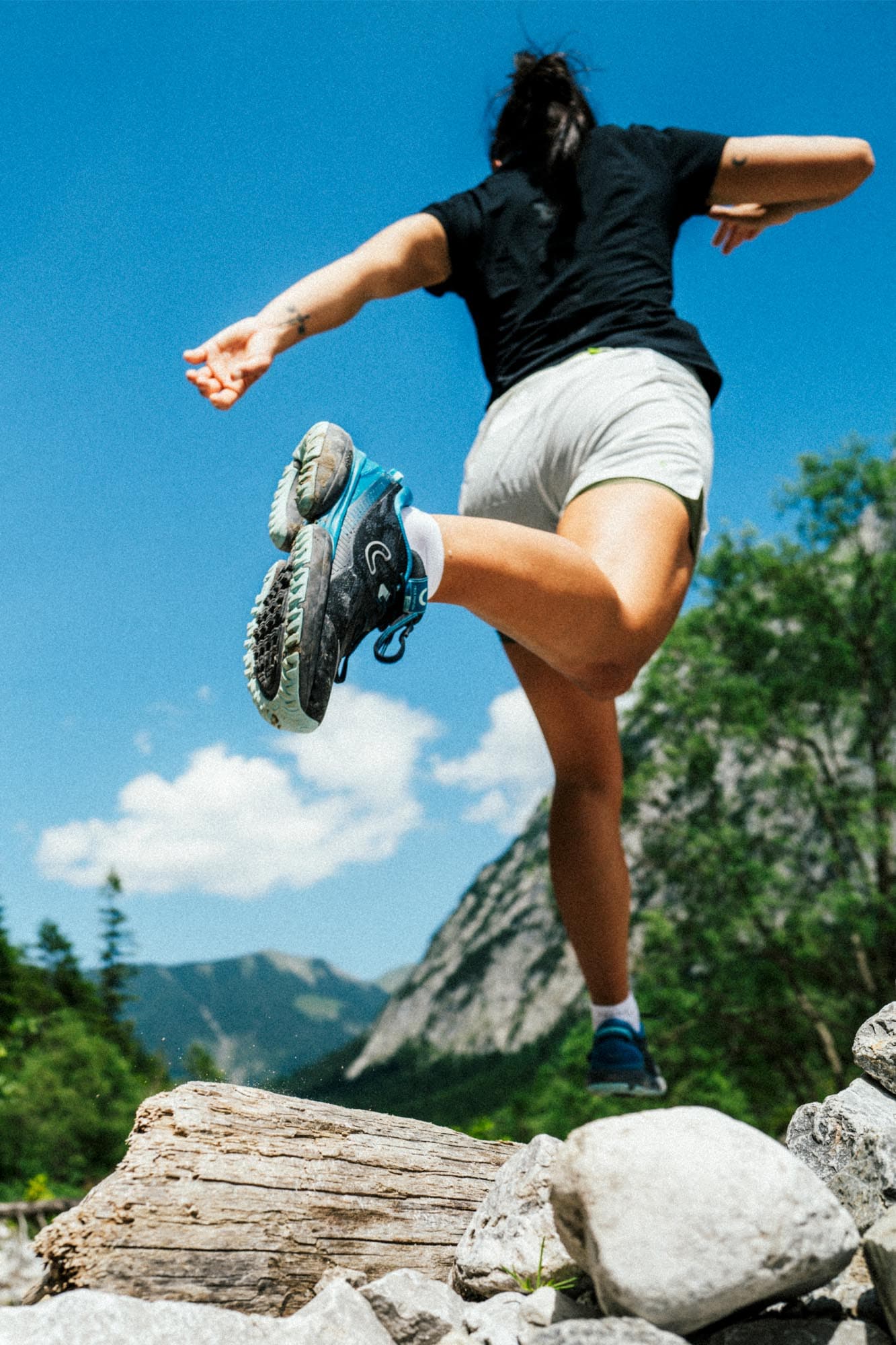
Unique comfort, even better grip, and a fit that gives you exactly the freedom you need – with the U-TECH Nevos Elements next gen, our hybrid running shoe gets an update that brings runners closer to endless possibilities – whenever and wherever we look for them. Day or night, in sun, rain, or wind, when long summer nights turn into unpredictable fall days – the U-TECH Nevos Elements next gen braves all elements and, as an update, enables an even safer, more comfortable, and thus even better running experience on all surfaces. And, thanks to U-TECH™ technology, with up to 50% less risk of injury. Read the full story behind the brand new U-TECH Nevos Elements next gen.
CHAPTER 6 (PART 3) ________
ABOUT 11,000KM THROUGH AFRICA:
"I TRY TO TAKE THINGS NOT TOO SERIOUSLY"
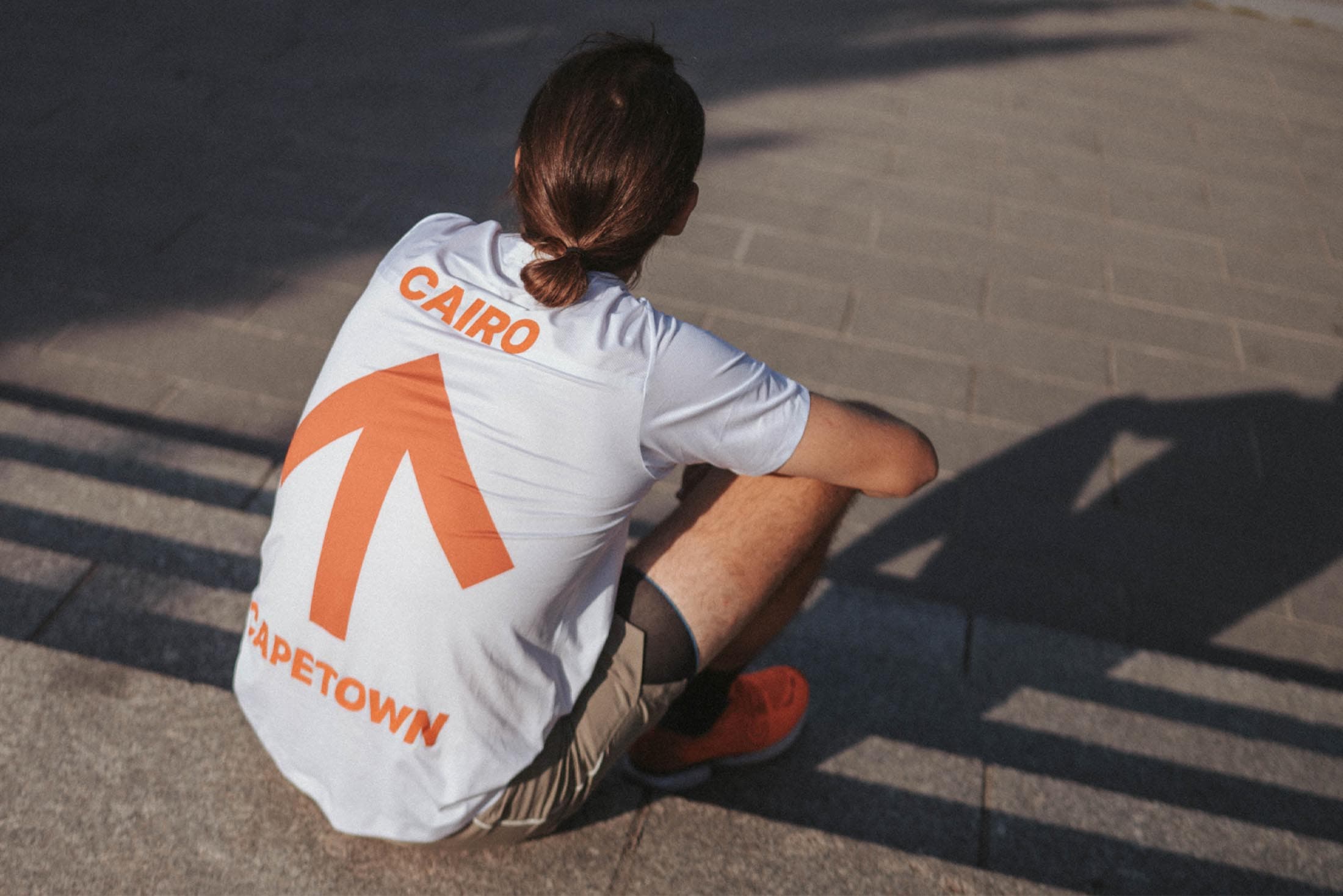
"Telling others about my profession and my project to run from Cairo to Cape Town I often find it is a conversation killer rather than a great opening. For many people it is simply hard to relate to such an endeavor. So let me try and break the ice a little," Fritz Sitte writes. Read the next part of his Project Running Africa.
CHAPTER 7 (PART 1) ________
FROM RUNNER’S KNEE TO JUMPER’S KNEE:
WHY RUNNERS MOST OFTEN INJURE THEIR KNEES
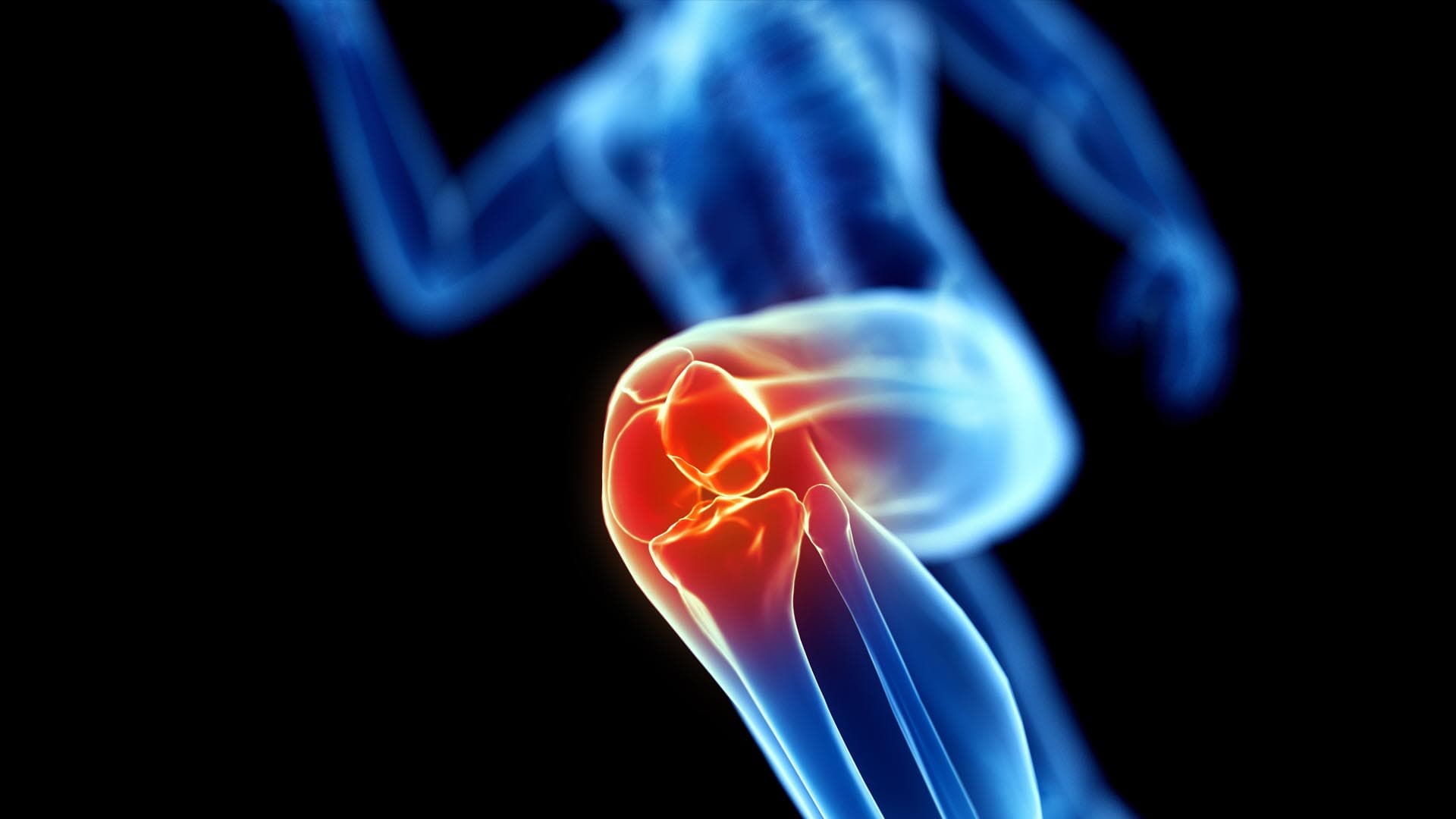
The sun is shining, our running shoes are ready. And we are ready. But after just a few kilometers we have to stop again. A sharp pain on the outside of the knee forces us to. Every attempt to start running again becomes torture. There’s only one thing left for us to do, to end the running session and head home. What sounds dramatic has been experienced by many runners in this or similar ways. To be more precise, more than one in four runners has had knee problems. Knee specialist Dr. Andree Ellermann explains why, what typical knee injuries there are, and what we should do if we are plagued by recurring complaints.
CHAPTER 7 (PART 2) ________
ABOUT THE INFLUENCE OF RUNNING ON LIFE – AND VICE VERSA:
“SIMPLY DO IT!“
“I’m Micha, @lauf_micha on Instagram, born in 1975, a “Billy Goat”, father of three boys. I studied business administration and moved from beautiful Koblenz to Saarbrücken, also beautiful, almost 20 years ago for love. I believe that everyone should dare to do more – even when it comes to running.“ Read Micha's inspiring story.
CHAPTER 8 (PART 1) ________
WHEN THE STRONGEST TENDON IN OUR BODY SHOWS SIGNS OF WEAKNESS:
WHY THE ACHILLES TENDON IS SO SUSCEPTIBLE TO RUNNING INJURIES
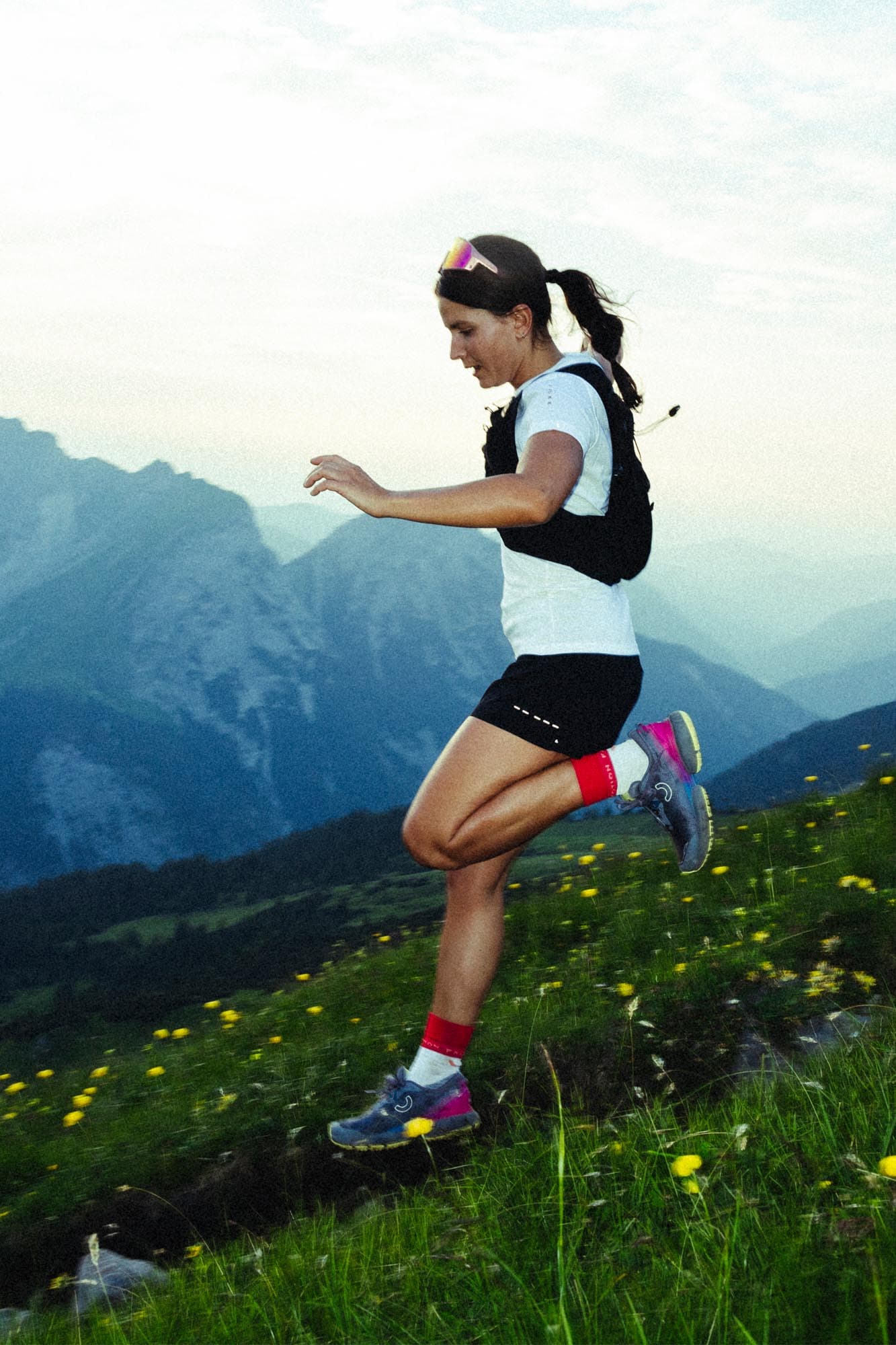
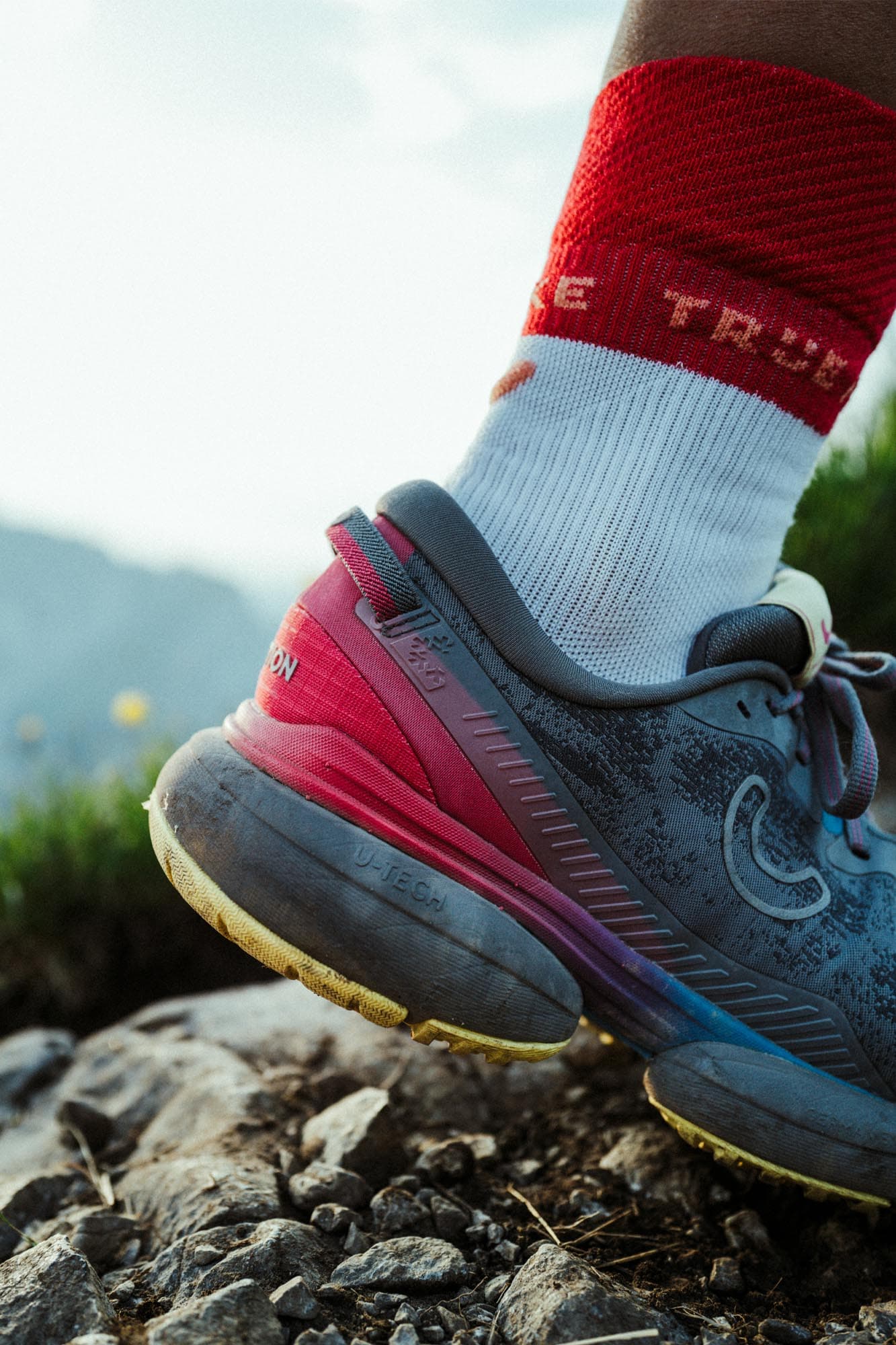
At rest, it is so strong that we could pull a small car with it: our Achilles tendon. However, under continuous stress and subsequent overloading, we may no longer be able to run a step without pain. Achilles tendon pain and injuries are common among runners. More than one in eight runners is injured at least once a year at this usually very strong tendon that connects our calf muscle to the heel. Dr. Paul Klein, sports physician and team doctor at 1. FC Köln, explains what makes the Achilles tendon so susceptible to injury, what we can do as soon as it hurts, and what to consider when treating an Achilles tendon injury.
CHAPTER 8 (PART 2) ________
FROM PROFESSIONAL ATHLETE TO ENTHUSIASTIC RECREATIONAL RUNNER:
“I WAS AFRAID I WOULD NEVER BE ABLE TO RUN AGAIN”
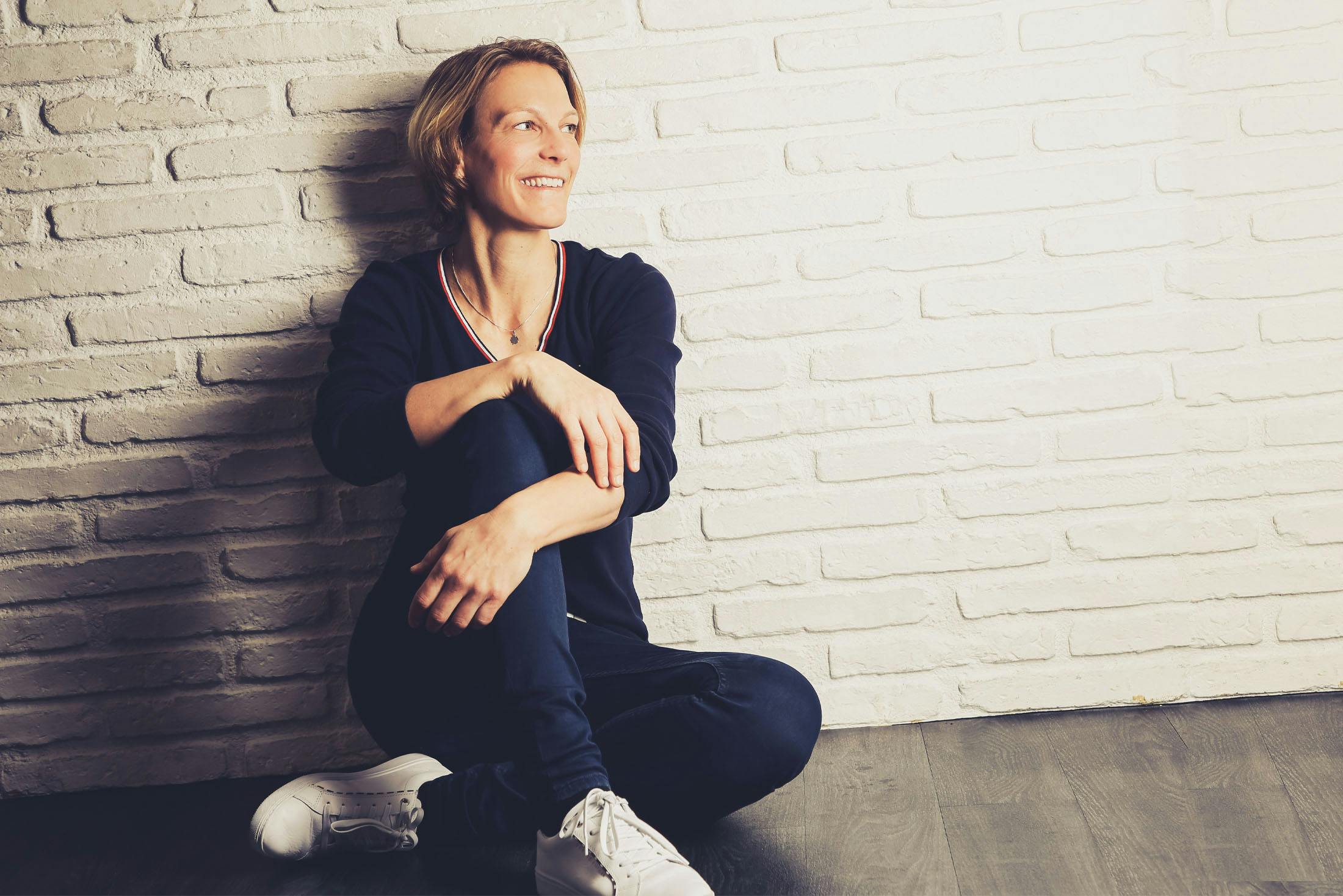
Two or three times a week, former pro athlete Jennifer Oeser runs along the roads and trails of Markranstädt in Saxony. But what she likes best is running around the lake close by. Just putting on her running shoes and heading out the front door. Without a running watch or heart rate monitor, the 39-year-old prefers to run by instinct. “The beauty of running is that I can decide spontaneously when to start, how long, and how far I want to run – entirely flexible and regardless of appointments and athletic commitments,” she says. What else Jennifer enjoys about running in her free time, what role the choice of her running shoes plays in this, and how she struggled with persistent Achilles tendon problems during her active career. A portrait.
CHAPTER 8 (PART 3) ________
220 KILOMETERS THROUGH THE JORDANIAN DESERT:
“OTHERS CALL ME CRAZY”
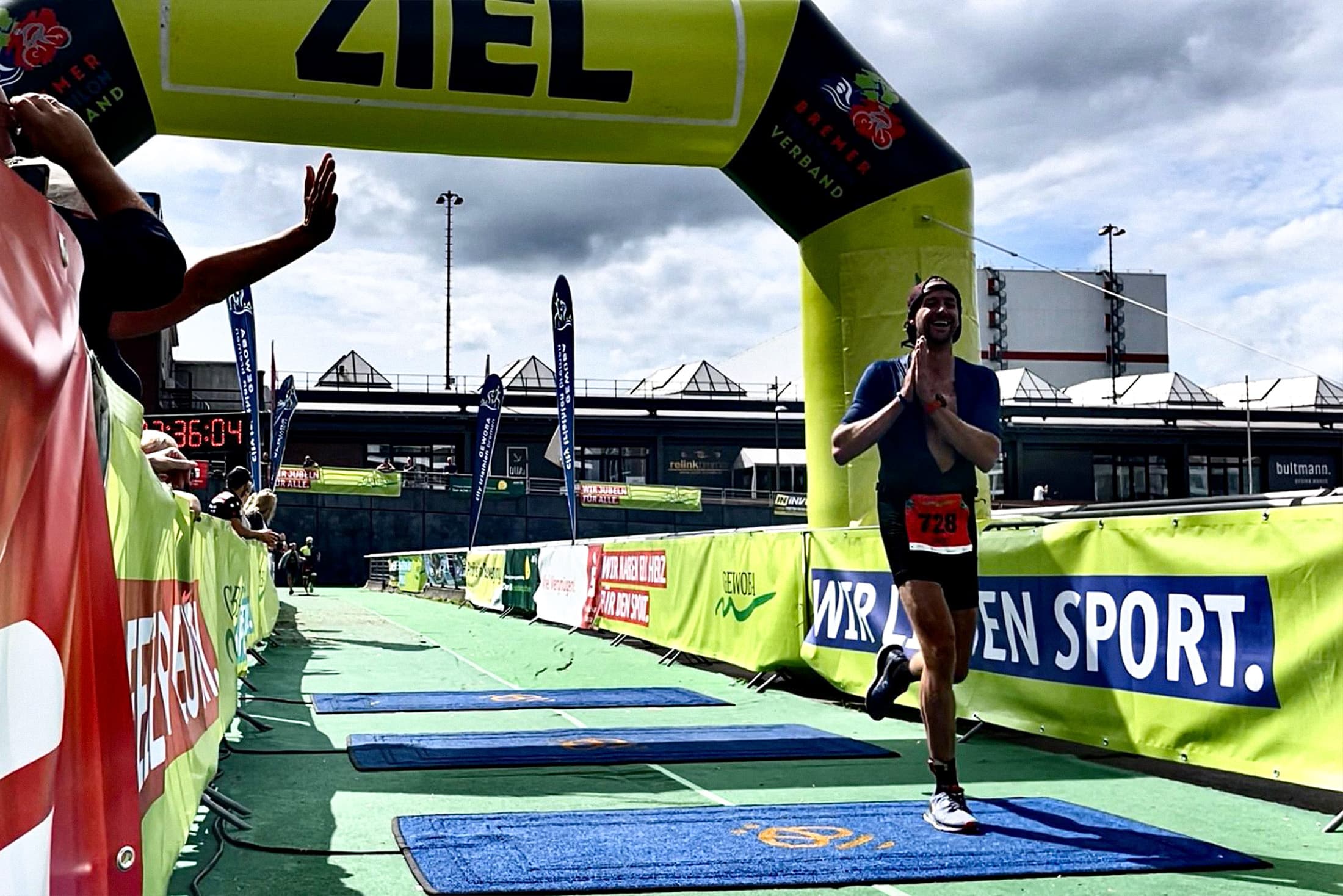
For Felix Sonnenschein, running is about balance. “I recalibrate – physically and mentally,” says the 35-year-old when asked about why he runs. A lap through the city park? Sometimes not enough. With two school friends, Felix is looking for a new challenge. And finds it in a five-day ultramarathon through Jordan. Why he dries vegetables and does yoga in a hot and wet studio. Read Felix's story in Chapter 8, Part 3.
CHAPTER 9 (PART 1) ________
OUR BACK IS A NATURAL SHOCK ABSORBER:
WHY WE HURT OUR BACKS WHEN WE RUN
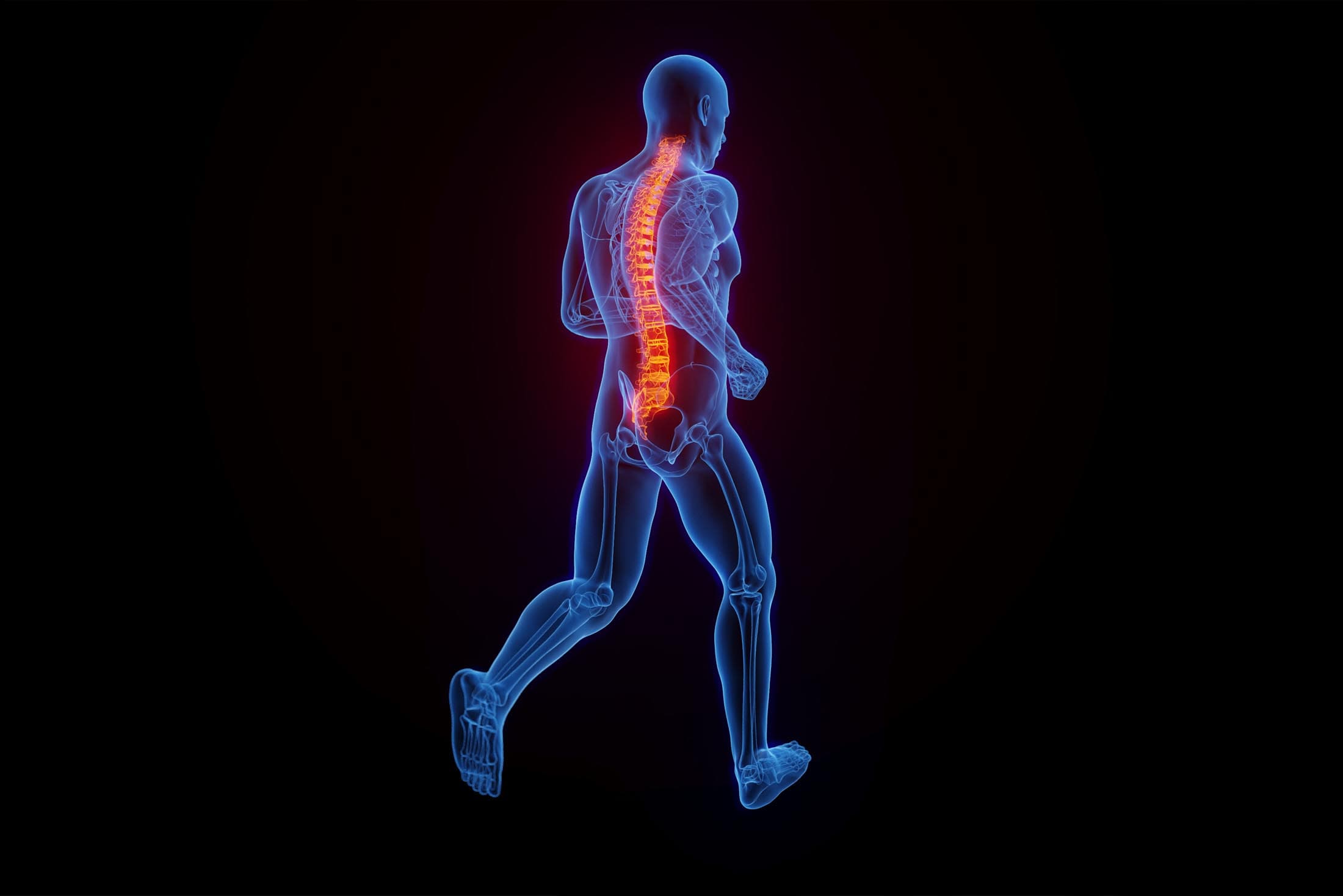
With every step, forces act on our body – every single time. Again and again. To absorb these forces and make them non-harmful to our structures, our body has various shock-absorbing mechanisms. One of the most important ones is our back. However, if it is subjected to excessive or misdirected loads, it is a matter of time before pain makes it difficult for us to run – or even prevents us from running altogether. And that’s exactly what happens far too often; more than one in eight runners suffer a back injury at least once a year. Dr. Matthias Säugling, orthopedist, sports physician, and team doctor for the German Ice Hockey League team Kölner Haie, gives an insight into how the back works and explains why the lower back is particularly susceptible to injury in runners.
CHAPTER 9 (PART 2) ________
ABOUT A LITTLE BOY’S GOAL:
THE OLYMPIC DREAM – HOW BAD DO YOU REALLY WANT IT?
CHAPTER 10 ________
ON A FIVE-DAY ULTRAMARATHON THROUGH THE JORDANIAN DESERT:
“IT WAS BRUTAL”
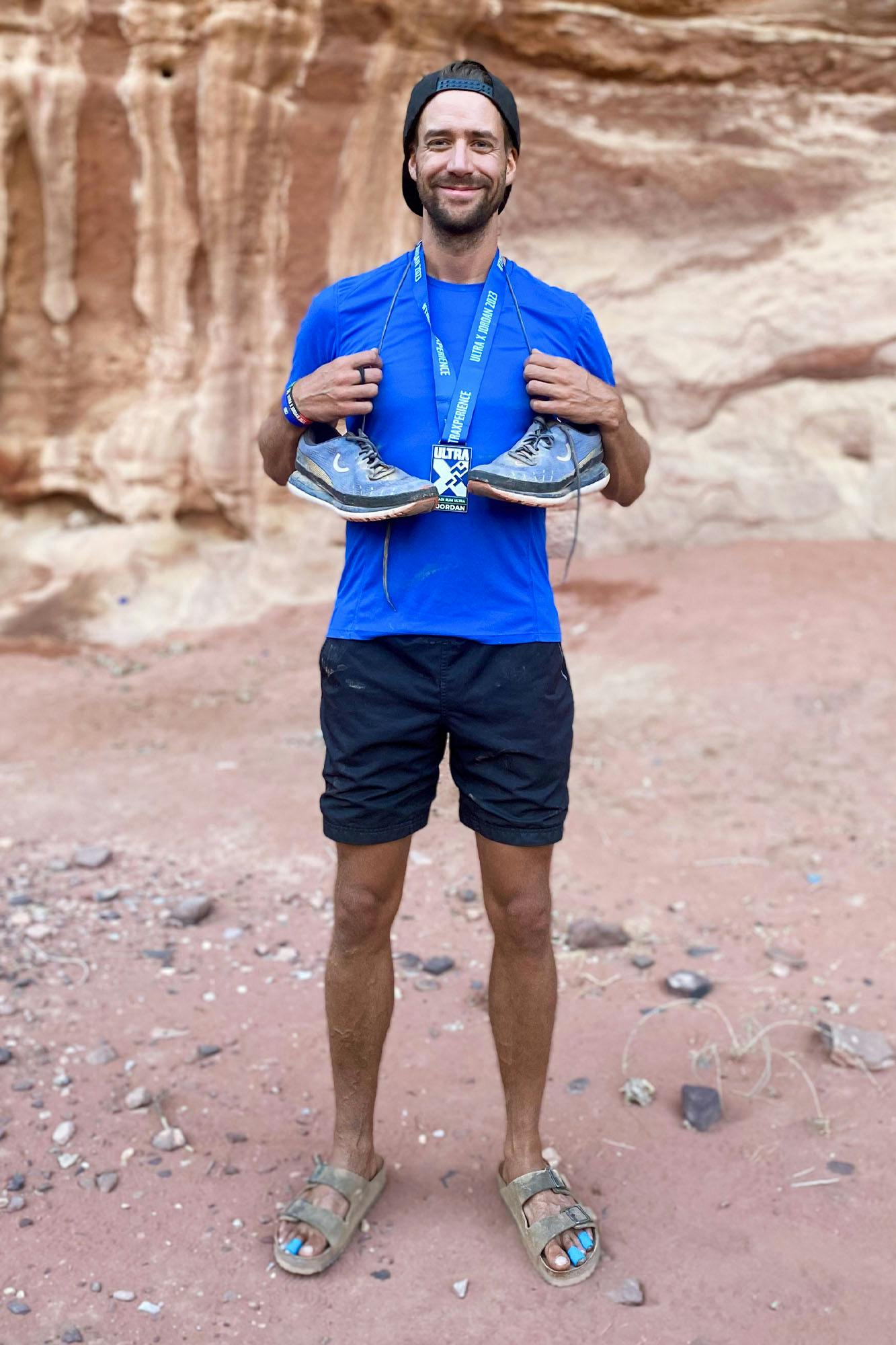
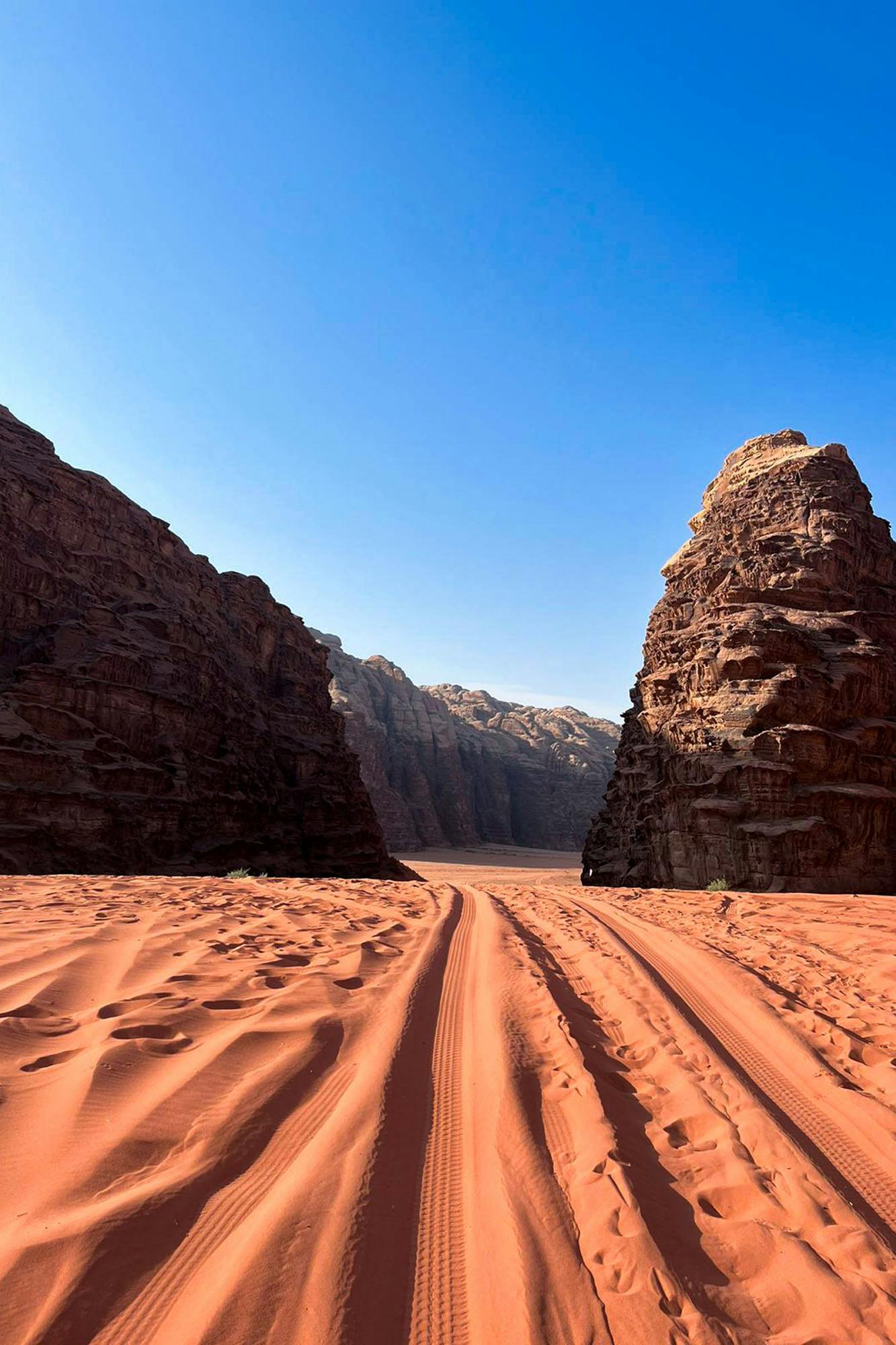
My name is Felix Sonnenschein. I am 35 years old. And two weeks ago, I ran through the Jordanian desert for five days in a row. A total of 220 kilometers. At over 30 degrees Celsius. The toughest thing I’ve ever done in terms of sports. A real challenge for body and mind. But also an unforgettable experience. This is my story.
CHAPTER 11 (PART 1) ________
TRUE MOTION OPEN INNOVATION CONTEST:
WHAT IS YOUR TRUE MOTION RUNNING SHOE MISSING SO FAR?
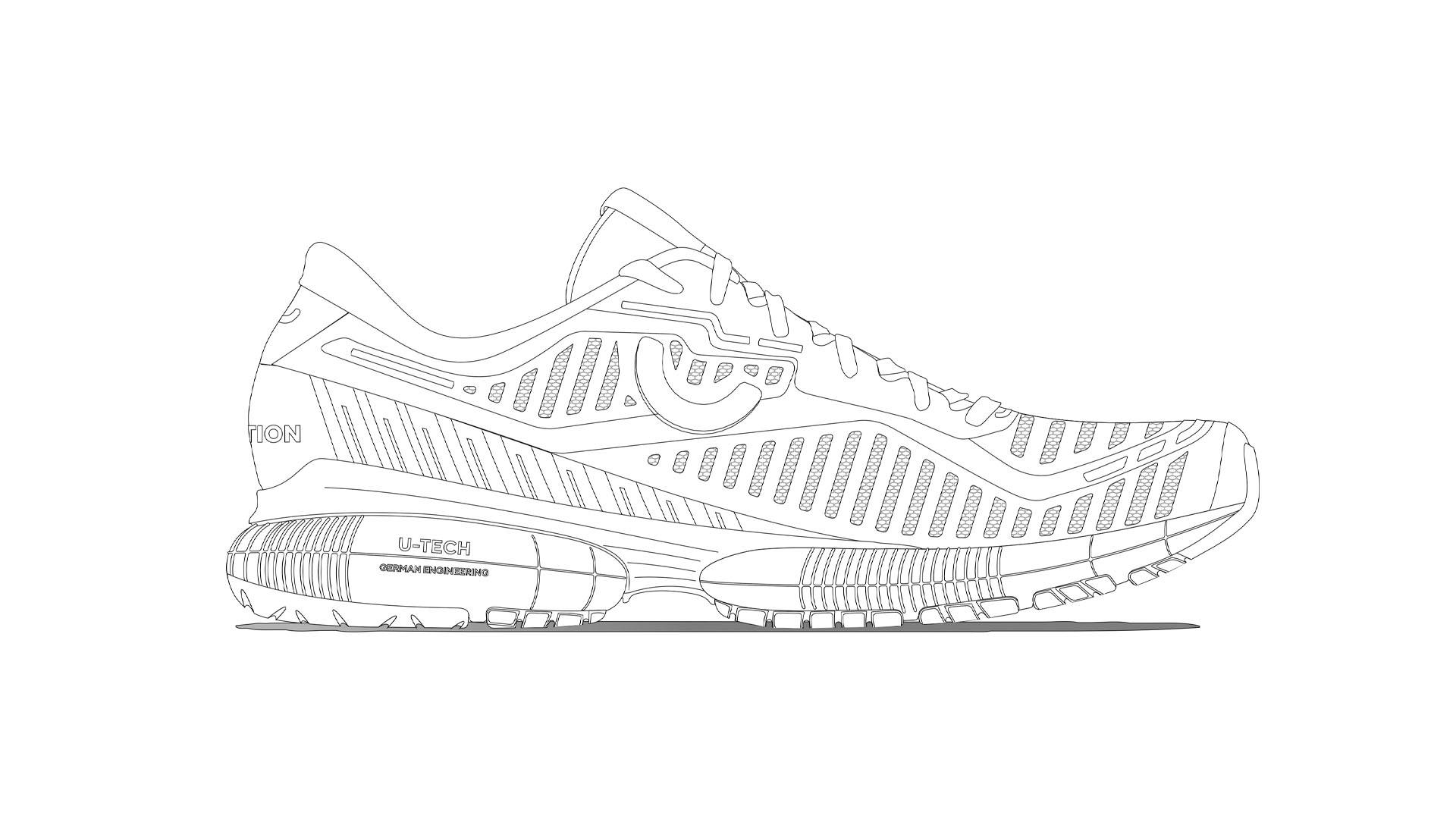
A certain color design, particularly comfortable mesh, an even greater trampoline effect, or a pull-on tab for slipping in easily. When it comes to what features our next running shoe should have, everyone has their own idea of the perfect combination. Very individual. Very different. Share your idea with us – and develop a True Motion running shoe.
CHAPTER 11 (PART 2) ________
FROM THE INITIAL IDEA TO THE FINISHED RUNNING SHOE:
HOW DO I DEVELOP A RUNNING SHOE?
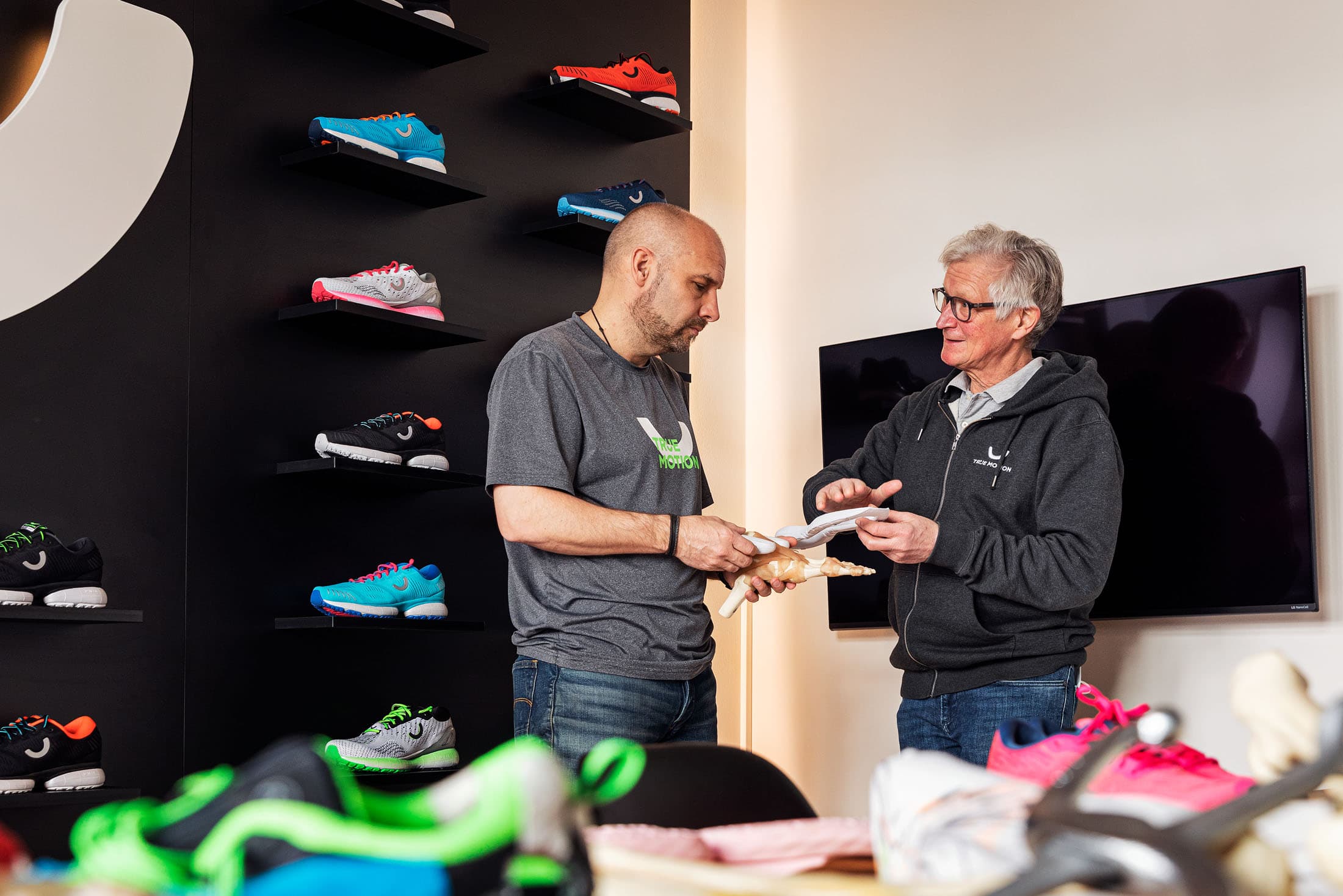
Reading customer feedback, examining new materials and discussing possible optimizations – a lot happens at the same time when a new True Motion running shoe is being developed. “The development process is multifaceted. A wide variety of steps need to intertwine to end up with a running shoe that appeals to runners and works biomechanically at the same time,” explains True Motion co-founder Andre Kriwet. An insight into the process of creating new running shoes.
CHAPTER 12 ________
THE NEW U-TECH NEVOS 3:
EVOLUTION NEVER ENDS: YOUR NEXT STEP
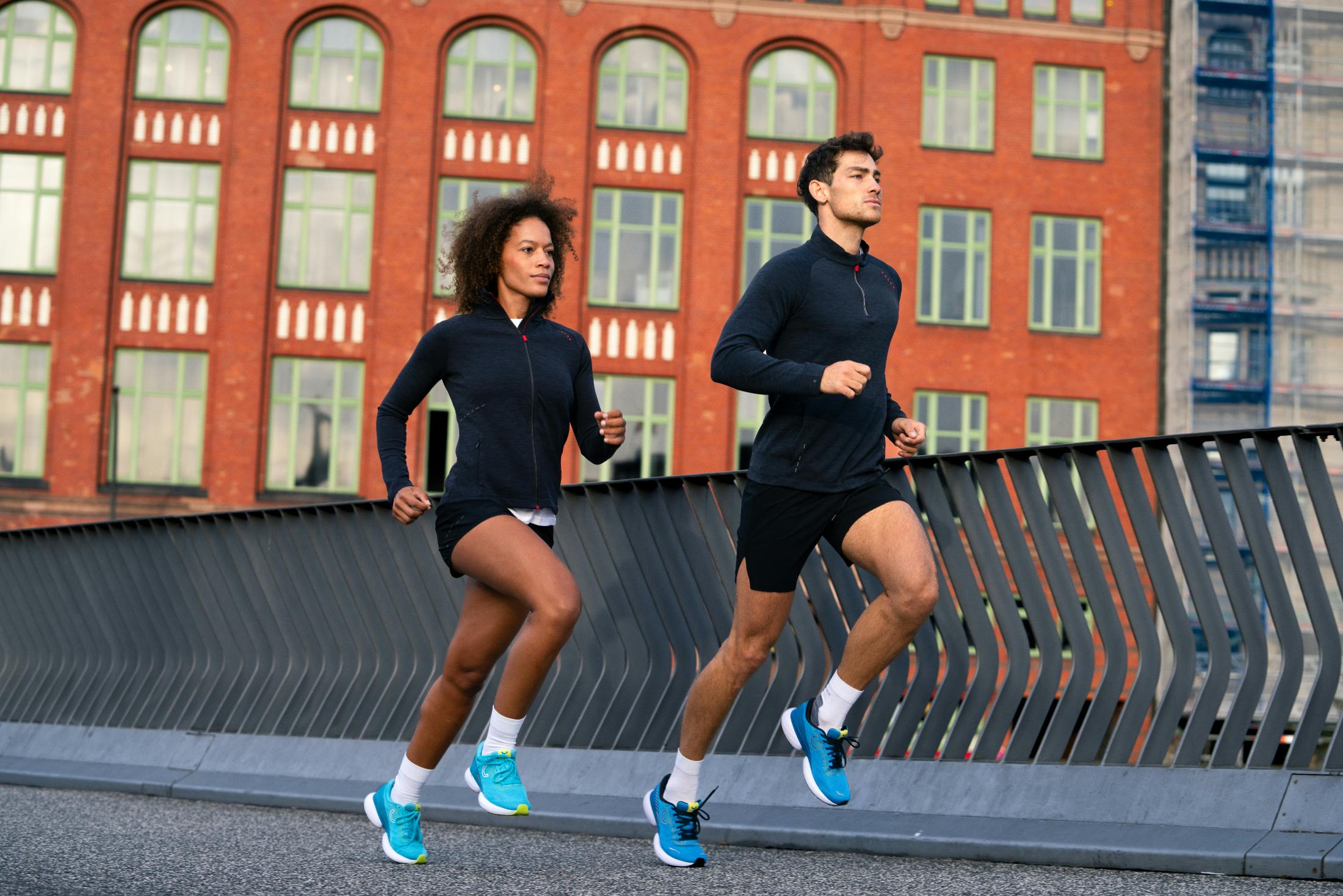
A unique mix of dynamics and even more comfort, longer durability, and an optimized fit – for more freedom of movement on all your runs. With the new U-TECH Nevos 3, our award-winning debut model gets an update that consistently takes the next step. A reliable companion for every day – and above all for every run. No matter when and for how long. Thanks to the patented U-TECH™ technology, the U-TECH Nevos 3 reduces the risk of running injuries by up to 50%. Evolution never ends!
RUN LOCAL, BUY LOCAL (PART 1) ________
RUN LOCAL, BUY LOCAL – AT DRESDNER LAUFSPORTLADEN:
ACROSS ELBFLORENZ IN NEW RUNNING SHOES
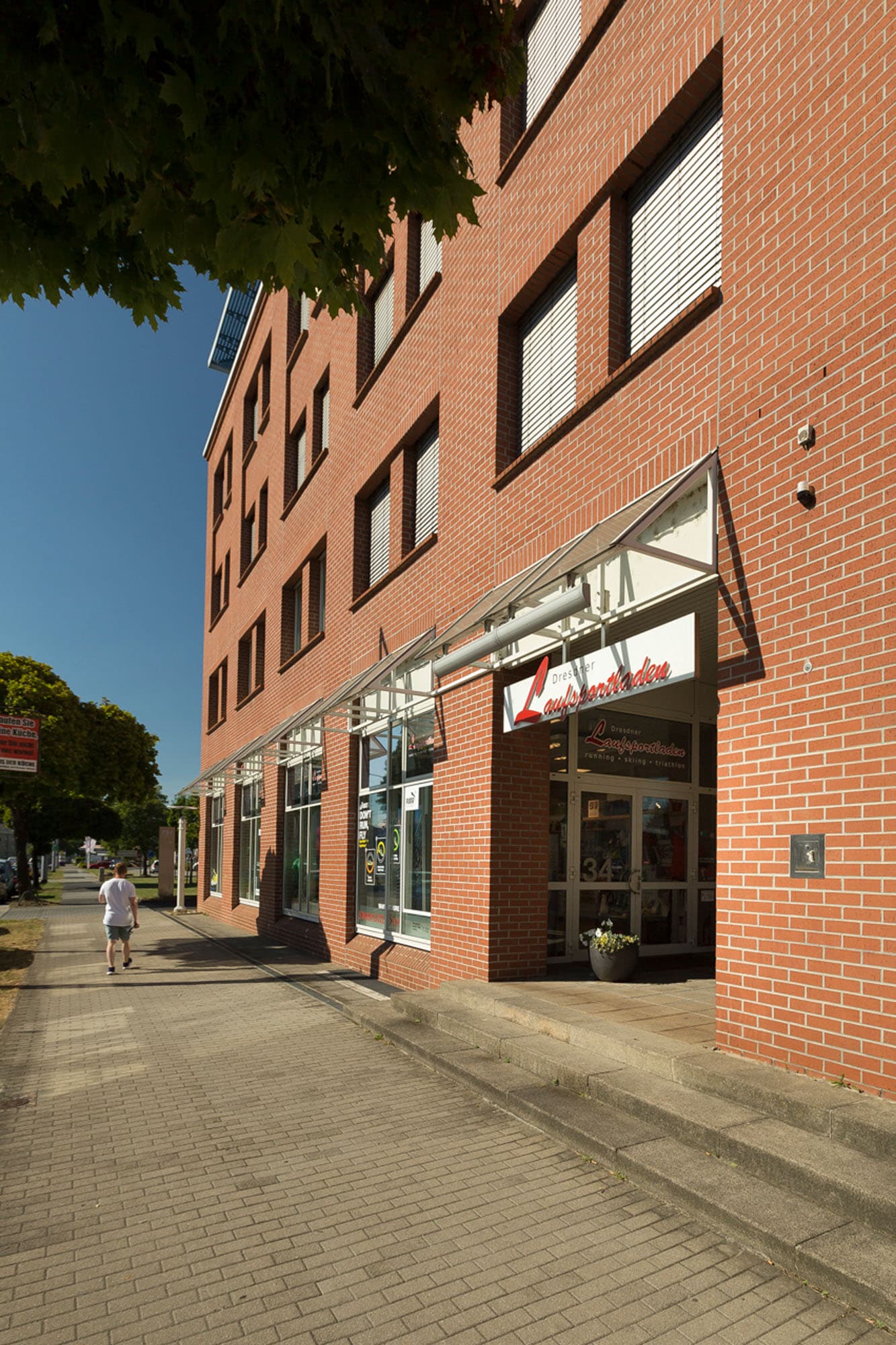
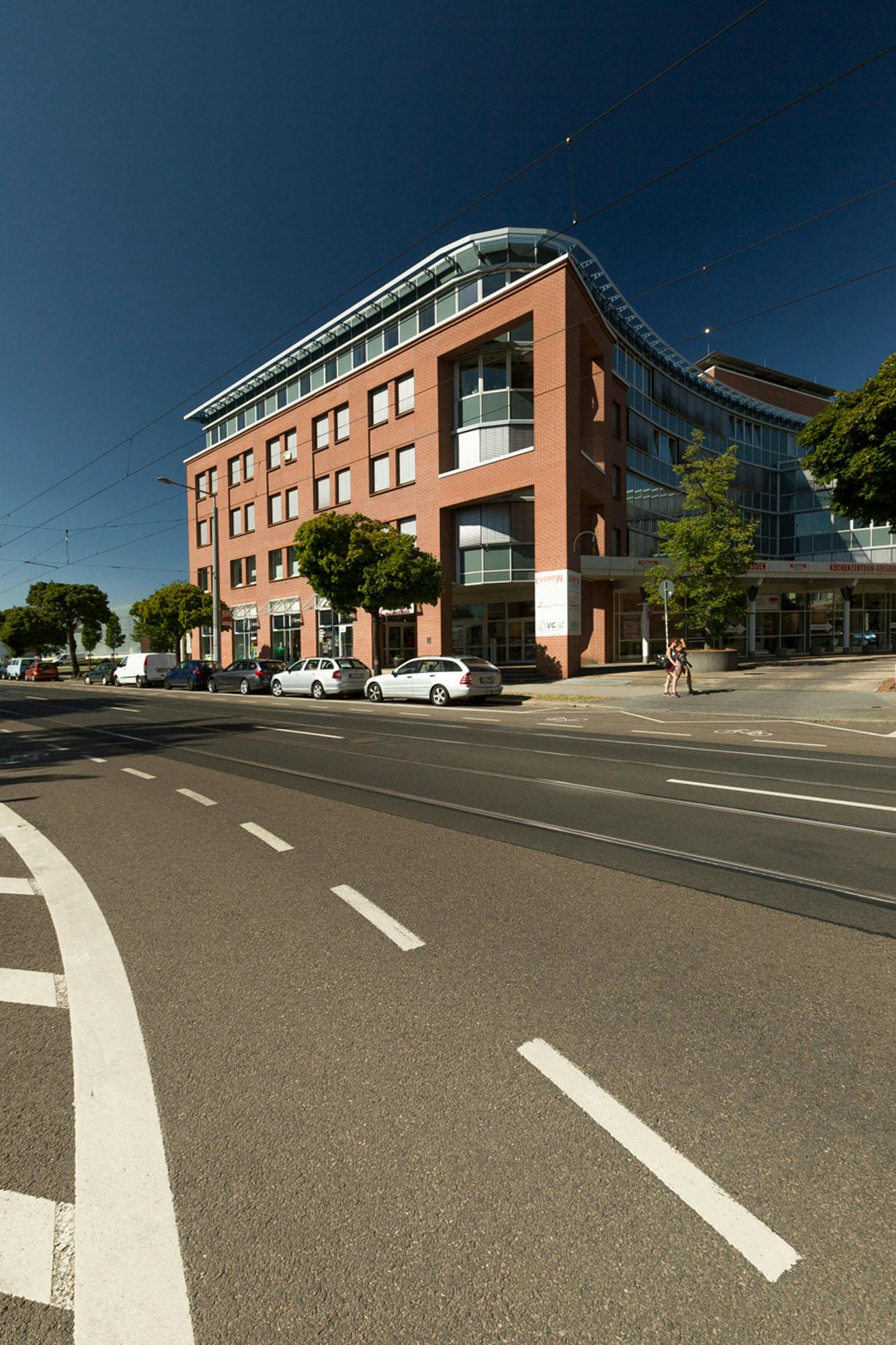
Past Dresden’s Frauenkirche church on Neumarkt, through the Brühl Gardens, upstream along the Elbe bike path to the Albert Bridge and back along the Königsufer to the Canaletto View. A route along many sights – not only the perfect stroll for countless tourists, but also popular with Dresden’s running community. Through the countryside and preferably along the water – the favorite running routes for many running enthusiasts. And if you like to run a lot, you need one thing above all: the right pair of running shoes. But how do you find the running shoes that suit you? Lutz Melzer and his father Bernd have made a career out of answering this question. With a great passion for sports and for running shoes as a product, the two have been running the Dresdner Laufsportladen for over 30 years now. The Melzers sold their first pair of running shoes out of a camper van window, but a stationary store was soon to follow. In our “RUN LOCAL, BUY LOCAL” series, we are portraying the running specialists from Dresden.
RUN LOCAL, BUY LOCAL (PART 2) ________
RUN LOCAL, BUY LOCAL – WITH ZIPPEL’S LÄUFERWELT:
FROM KIEL INTO NORTHERN GERMANY: RUNNING EXPERTISE BEYOND THE CITY’S LIMITS
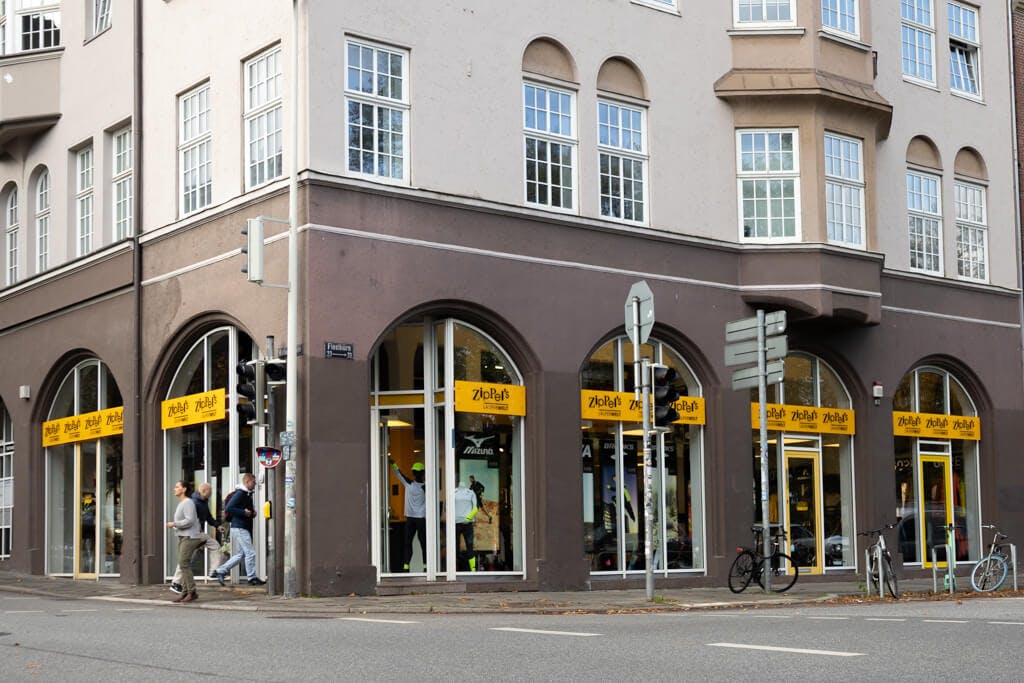
All across Schleswig-Holstein, from the North Sea to the Baltic coast, from Husum to Damp – the annual “Run between the Seas” relay race has thousands of fans. For the past 17 years, teams of five to ten runners have covered a distance of around 90 kilometers. ZIPPEL’S Läuferwelt has been one of the organizers from the beginning. Starting more than 40 years ago as a one-man running shoe business, ZIPPEL’S now supplies running enthusiasts in the northernmost state of Germany with everything they need for running. In our “RUN LOCAL, BUY LOCAL” series, we are portraying the running specialist from Kiel, which has also opened stores in Flensburg, Lübeck, Norderstedt, and on the island of Sylt over the years.
CHAPTER 13 ________
ABOUT SETBACKS:
"I LEARNED A POWERFUL LESSON"
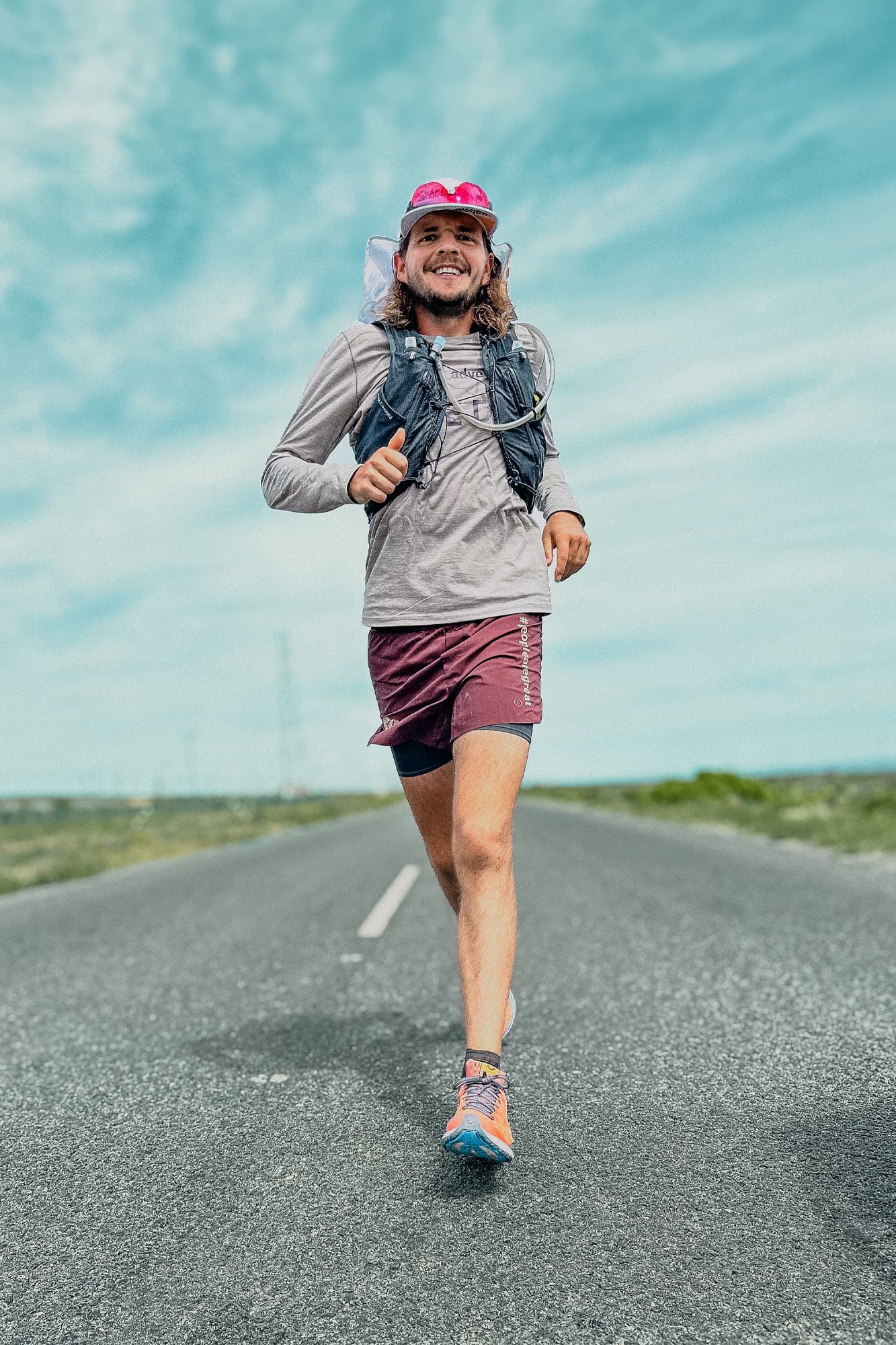
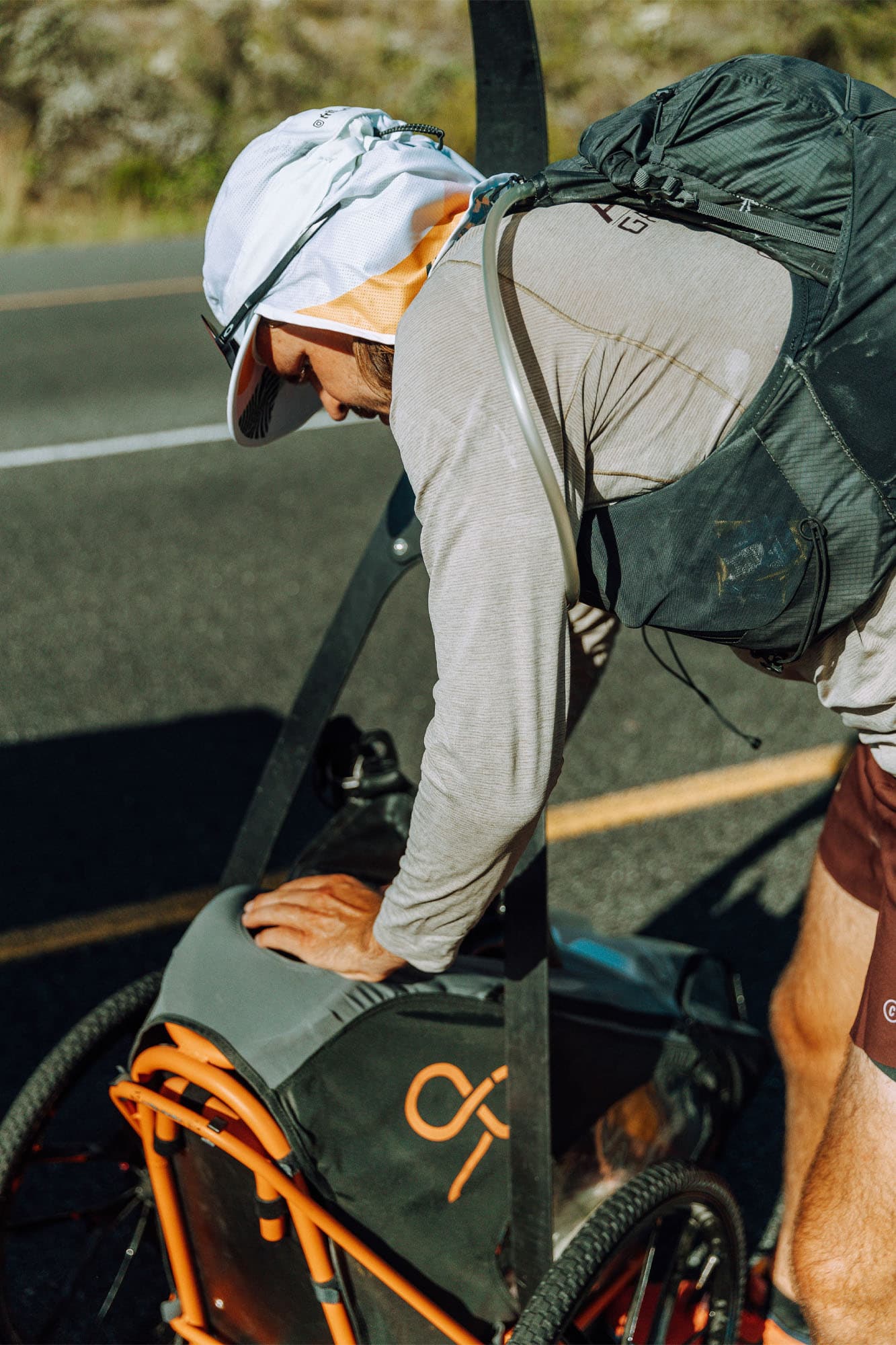
In October 2023, I set out to run from Cape Town to Cairo. The goal was ambitious, spirits were high, and preparations were thorough. For 22 days, I managed to cover over 60 km daily, battling fatigue, extreme temperatures, and the sheer vastness of the Namibian desert. And then I “failed”. Nearly 1,500 km into the journey, a hip injury halted my progress.
RUN LOCAL, BUY LOCAL (PART 3) ________
RUN LOCAL, BUY LOCAL – AT LEIPZIGER LAUFLADEN:
IN THE FOOTSTEPS OF GERMANY’S FIRST MARATHON
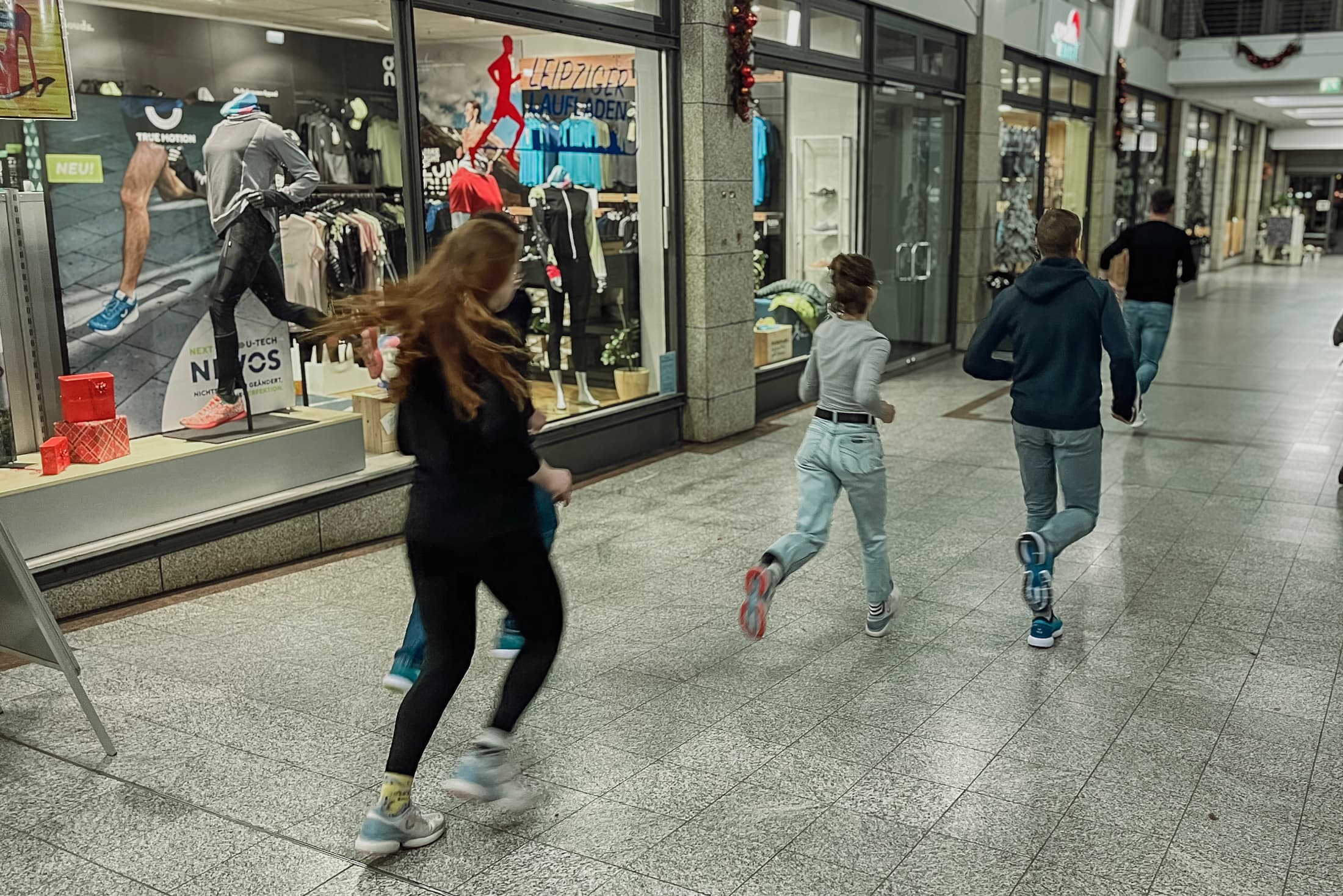
Running in Leipzig has a long-standing tradition. Internationally known as a city of trade fairs and commerce, Saxony’s most populous city also stands for something else in the running scene – it is the birthplace of the first marathon in Germany. Organized in 1897, with 18 runners taking part. Almost 30 years later, in 1925, this was followed by the 1st German Marathon Championships, from Halle to Leipzig. Today, more than 5,000 running enthusiasts participate in the city’s largest running event, the Leipzig Marathon, every year to complete the longest Olympic running discipline. 42.195 kilometers, several hours of continuous running, an extreme strain on body and mind. This requires training and a great deal of discipline. Just as important: the right running shoes. Since 2003, the Leipziger Laufladen has been the first choice for all running enthusiasts in the region when it comes to running equipment. In our “RUN LOCAL, BUY LOCAL” series, we are portraying the running specialist from Leipzig.
RUN LOCAL, BUY LOCAL (PART 4) ________
RUN LOCAL, BUY LOCAL – AT BUNERT – DER KÖLNER LAUFLADEN
WHEN THE CATHEDRAL CITY BECOMES A RUNNING CITY
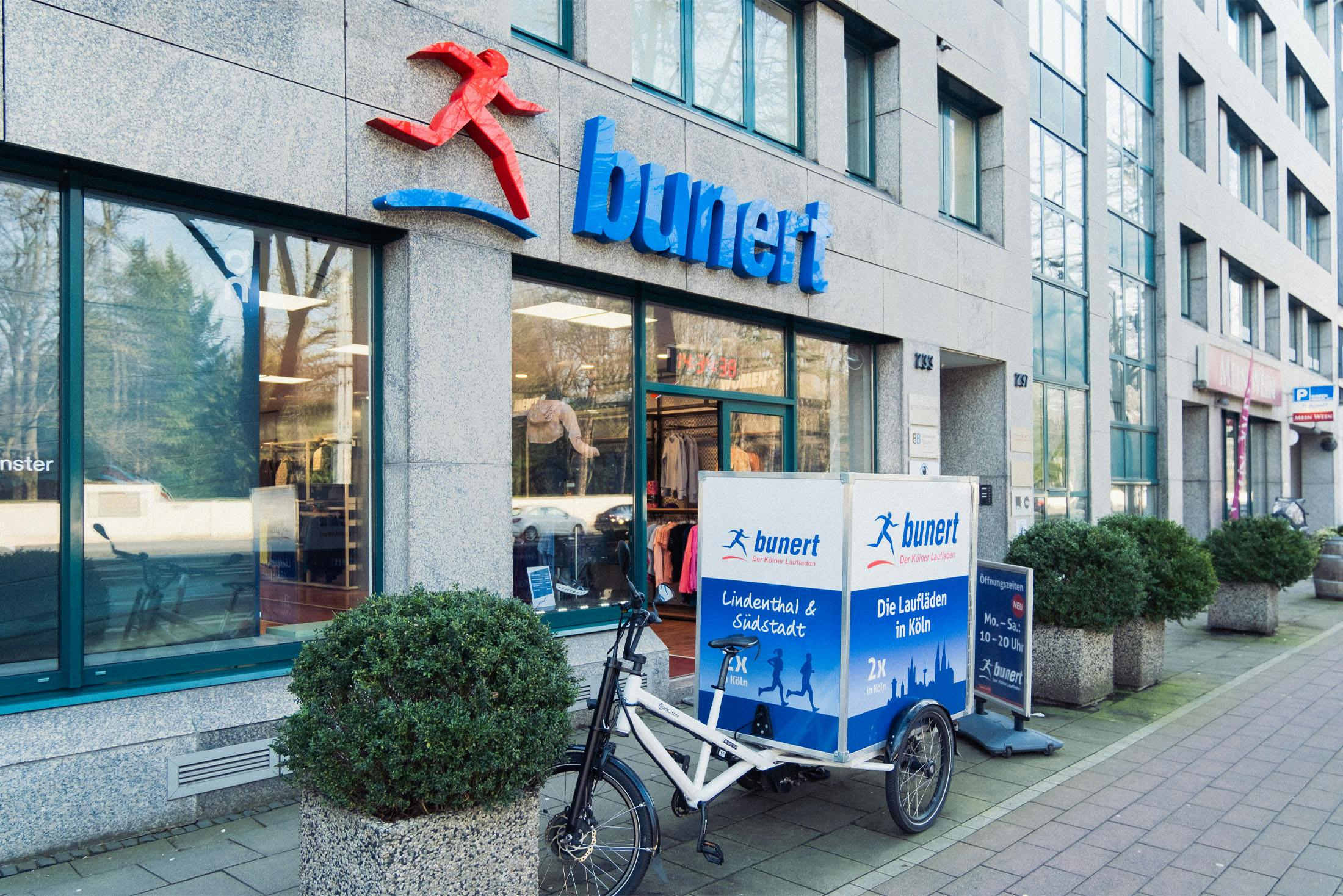
In Lindenthal, on the highly frequented streetcar line 1, between the stops Universitätsstraße and Melaten, halfway between the city center and the west of Cologne, which is packed with sports facilities including the German Sport University, sports enthusiasts will find the city’s running specialist Bunert Köln. For 19 years now, the Cologne running store at Aachener Straße 233–237 has been supplying all running enthusiasts in the cathedral city with everything a runner’s heart desires – from running shoes and socks to running jackets. As soon as you enter the store, you’ll step on the running track. Watch out, another customer may be running the first few meters in their new running shoes. At the end of the track, you’ll see the extensive running shoe wall, the heart of Bunert Köln. In our “RUN LOCAL, BUY LOCAL” series, we are portraying the running specialist from the most populous city in North Rhine-Westphalia, which has also been located in Cologne’s Südstadt district since 2015.
RUN LOCAL, BUY LOCAL (PART 5) ________
RUN LOCAL, BUY LOCAL – AT FRANKFURTER LAUFSHOP
RUNNING WITH A VIEW OF THE SKYLINE
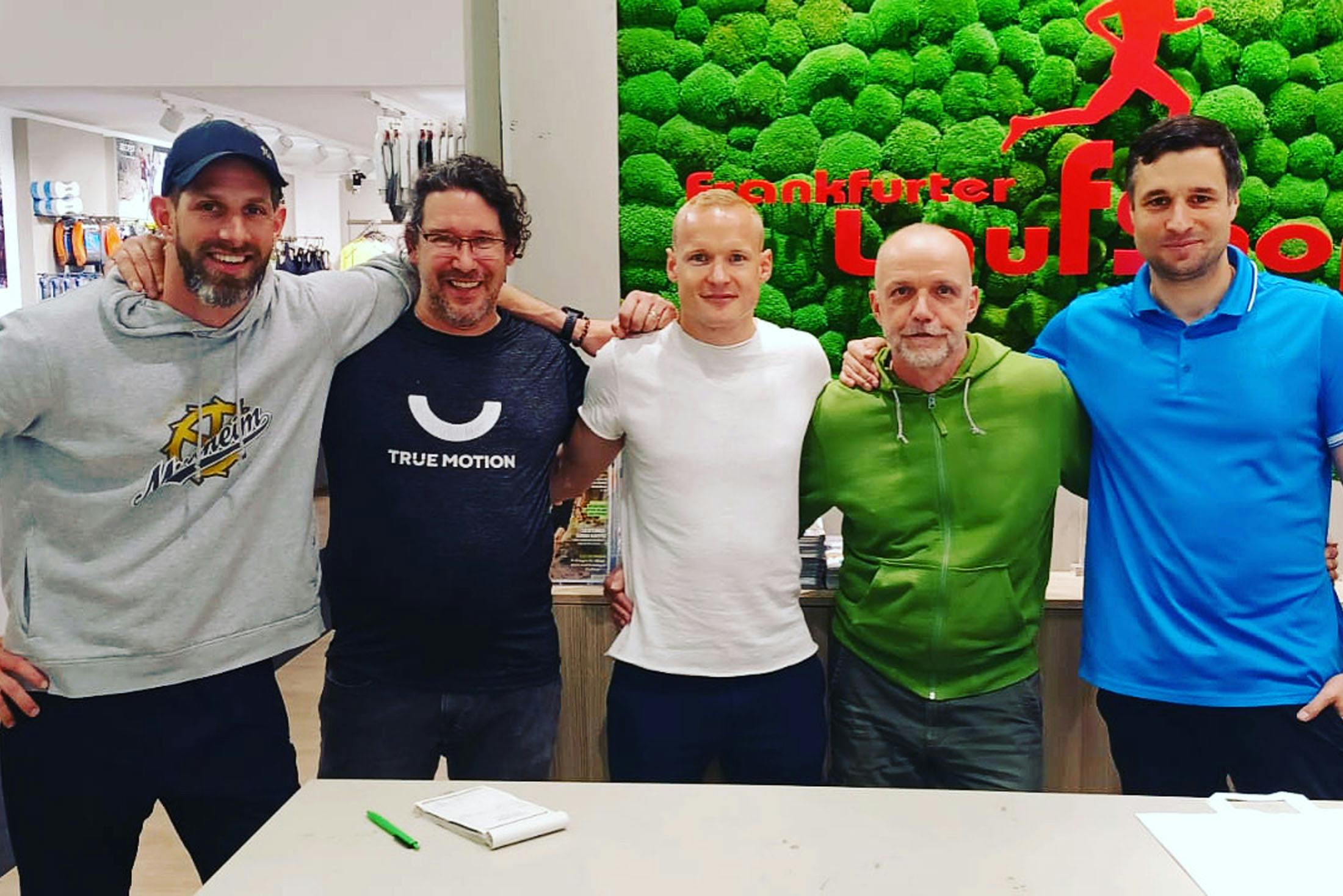
Along the banks of the River Main in Sachsenhausen, through the canyons of the banking district or the city park: the running routes in Frankfurt are many and varied. You can run on different surfaces, from tarmac to unpaved or paved trails. One of many factors that are important when choosing the right running shoe. However, finding out which model is best suited to your running habits and goals remains a challenge for many runners. Jost Wiebelhaus and his team have committed themselves to providing advice for just that. For many running enthusiasts from the region, the Frankfurter Laufshop has been the first port of call in the financial metropolis for over 22 years now when they are looking for new running equipment. In our “RUN LOCAL, BUY LOCAL” series, we are portraying the running specialist from Frankfurt.
RUN LOCAL, BUY LOCAL (PART 6) ________
RUN LOCAL, BUY LOCAL – AT INTERSPORT NOACK:
RUNNING WHERE SILVER USED TO BE MINED

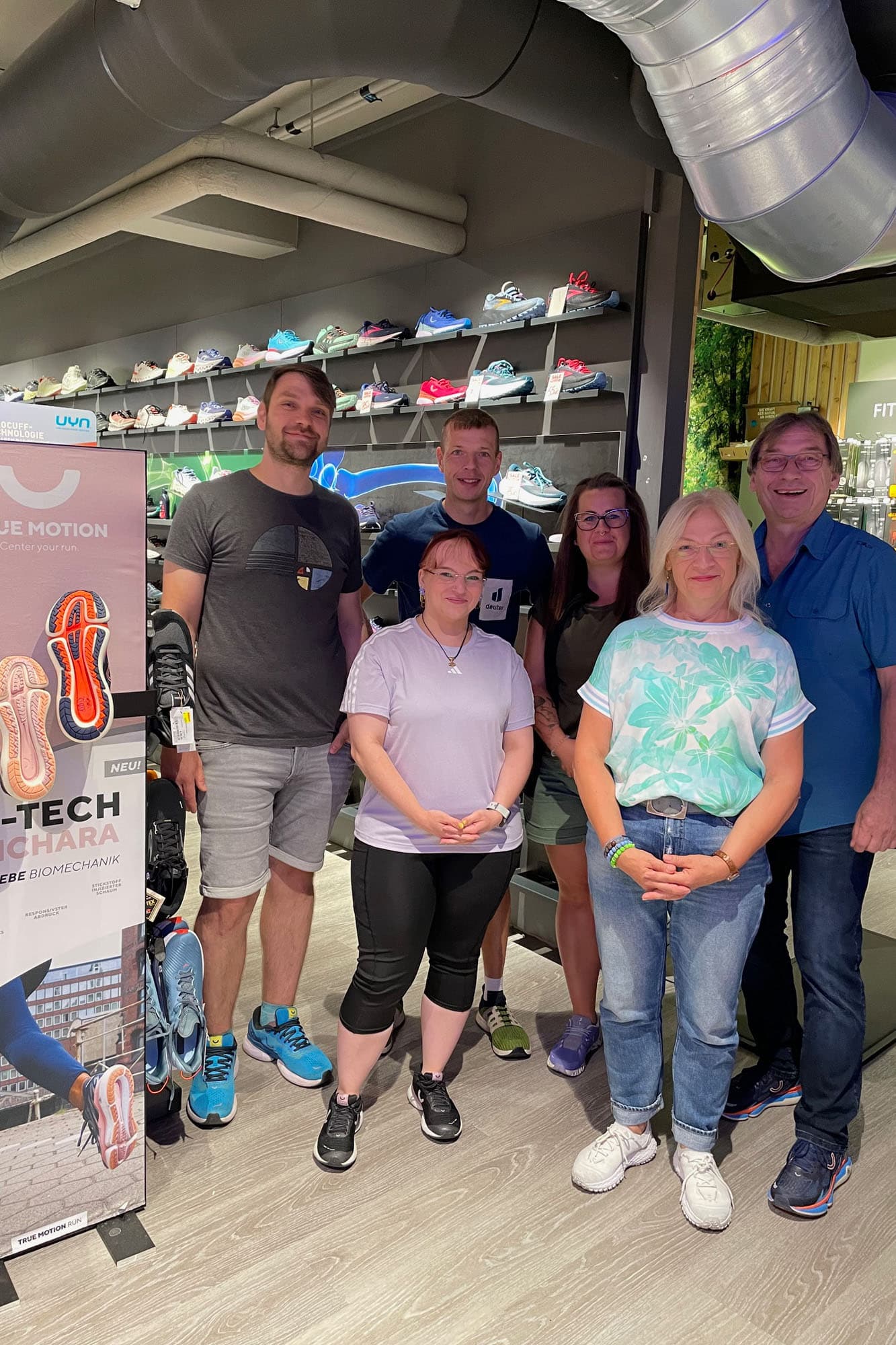
At Freiberg’s Obermarkt, in the historic old town in the immediate vicinity of the town hall, running enthusiasts from the region have found the town’s sports specialist for 24 years. INTERSPORT Noack has everything you need for running. Into your running shoes, get set, go. Many running routes start in the center, for example to the town’s most famous landmark – the “Reiche Zeche” (“Rich Pit”) silver mine. Located in the north of the Ore Mountains, Freiberg can look back on over 800 years of mining tradition. Since 2019, the center of the so-called silver city has been a UNESCO World Heritage Site in the Ore Mountains mining region. A region that invites you to run due to its abundance of nature, green forests, and idyllic hiking trails. In our „RUN LOCAL, BUY LOCAL“ series, we are portraying the sports retailer from Freiberg in Saxony.
RUN LOCAL, BUY LOCAL (PART 7) ________
RUN LOCAL, BUY LOCAL – AT INTERSPORT HÜBNER IN LEUNA
ALONG THE SAALE RIVER IN THE RIGHT RUNNING SHOES

Primarily known for its chemical industry, Leuna in Saxony-Anhalt also possesses an abundance of nature and green spaces – and therefore offers a variety of running routes for runners from the region. Whether along the Saale River, through the garden city or through the Elster-Luppe-Aue wetlands, there are many opportunities to accumulate kilometers in and around Leuna. In addition to suitable routes, the right equipment is essential for really enjoying a run. A particular focus lies on choosing the right running shoes. Since 2015, sports enthusiasts from Leuna and the surrounding area have been able to get a wide selection and the advice they need when buying running shoes at INTERSPORT Hübner. In our ‘RUN LOCAL, BUY LOCAL’ series, we are portraying the specialist sports retailer from the Günthersdorf district of Leuna, which is located in the NOVA shopping center.
LITERATURE
PROLOGUE
[1] With approximately 24 million runners in Germany. Source: IFD Allensbach (2022), Allensbacher Markt- und Werbeträger-Analyse (AWA 2022).
RESEARCH AND DEVELOPMENT:
SCIENTIFICALLY VALIDATED TECHNOLOGIES
Almost 100 % of our technology is derived from scientific findings and biomechanical research. Prof. Dr. Gert-Peter Brüggemann, head of the Institute for Biomechanics and Orthopedics at the German Sports University Cologne for decades, is largely responsible for this. Over the past 25 years, he has been part of numerous innovative running shoe developments – and thus a sought-after expert among the giants of the industry.
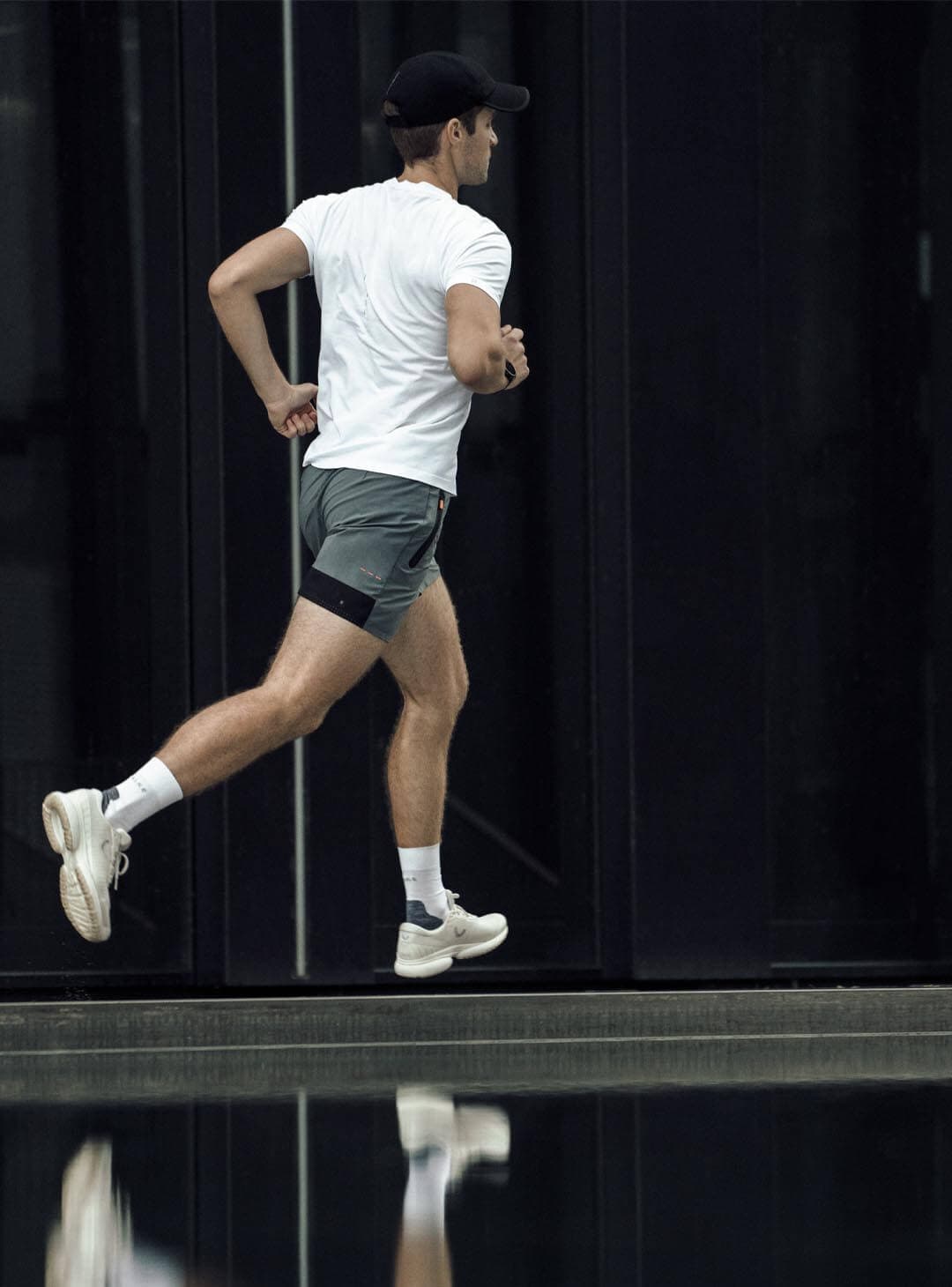
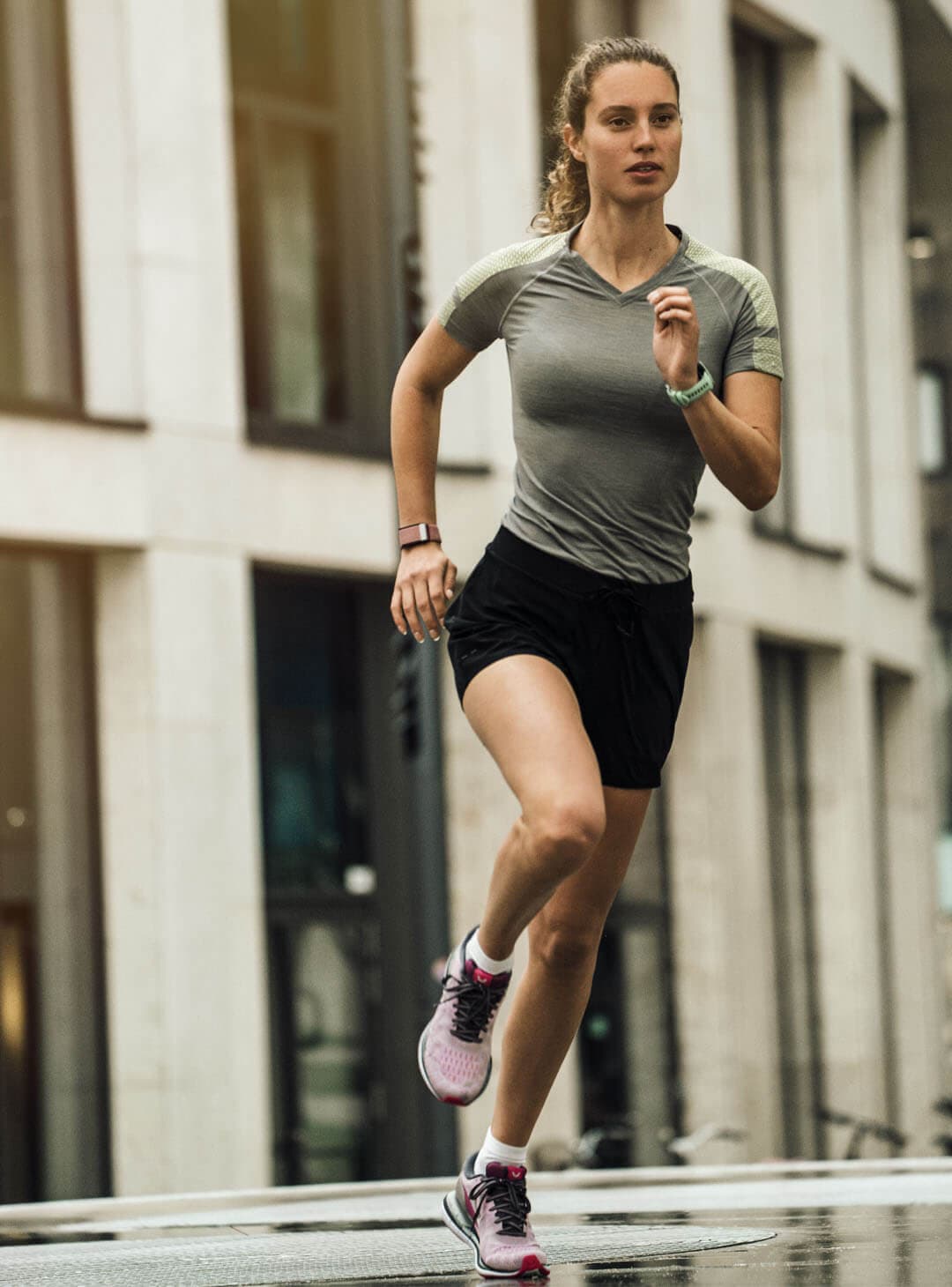
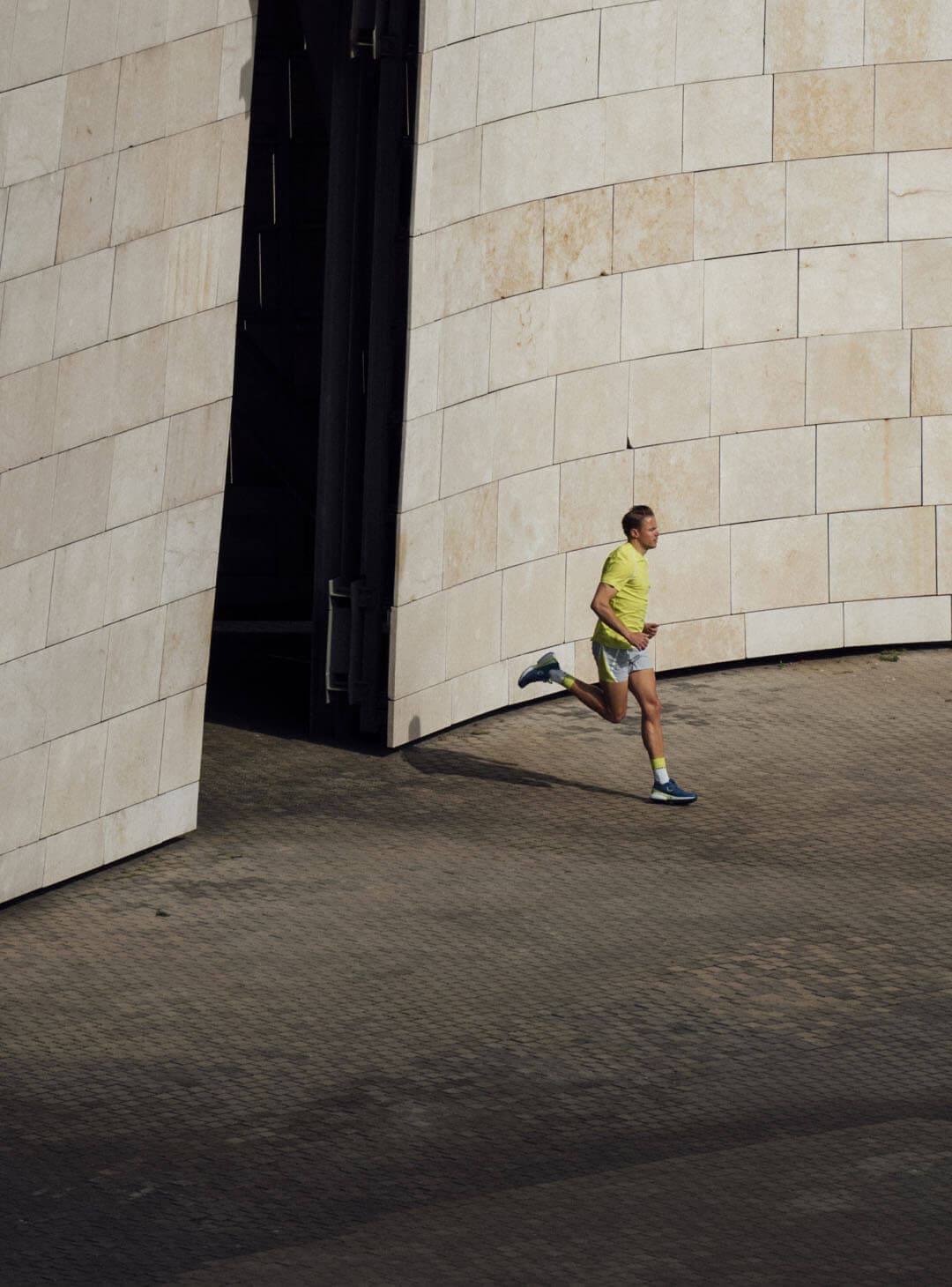

NEVER RUN OUT OF
NEWS
Discover all True Motion stories – and be the first to hear about new products, promotions and events. Simply, center your run!
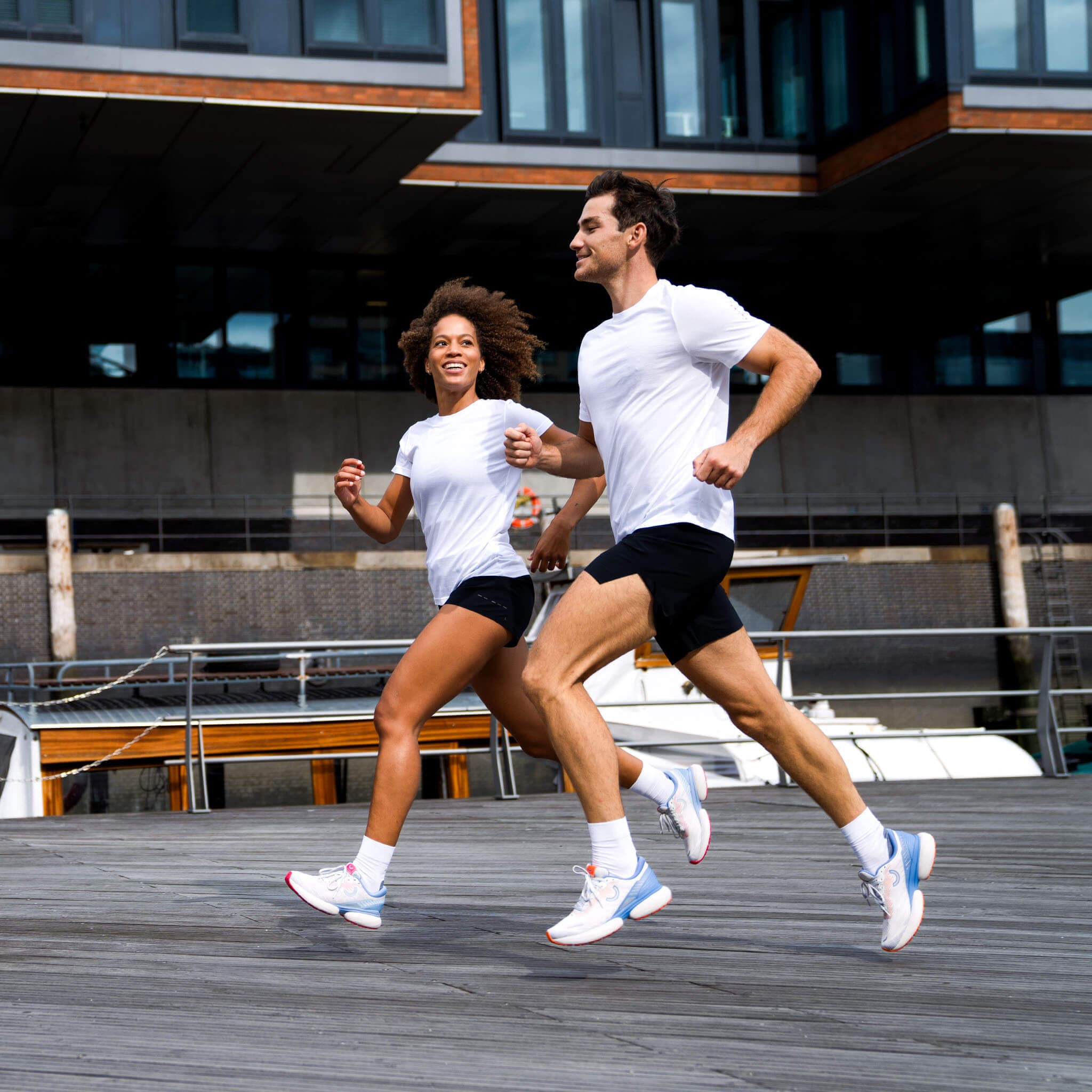
NEVER RUN OUT OF
NEWS
Discover all True Motion stories – and be the first to hear about new products, promotions and events. Simply, center your run!
RECOMMENDED BY


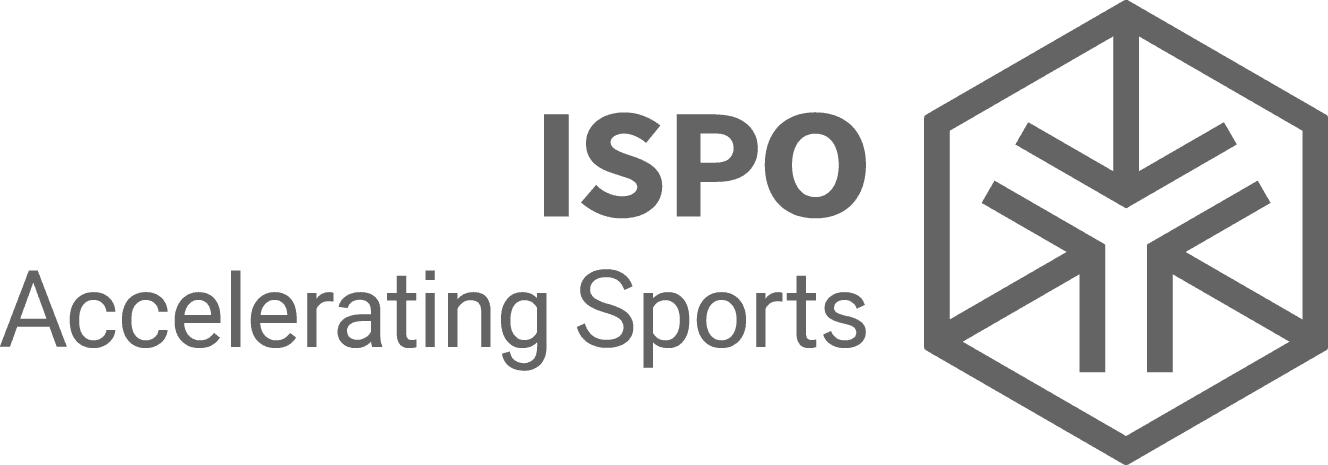
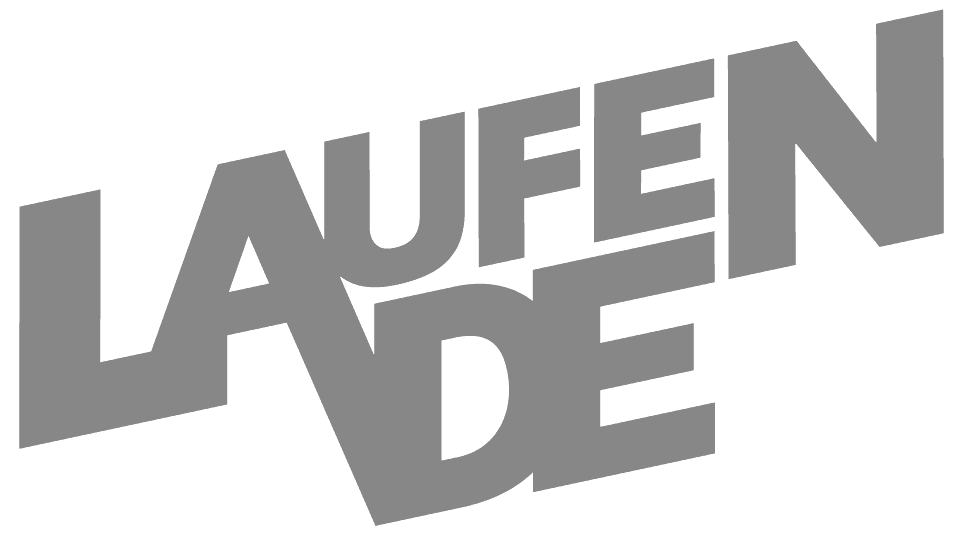


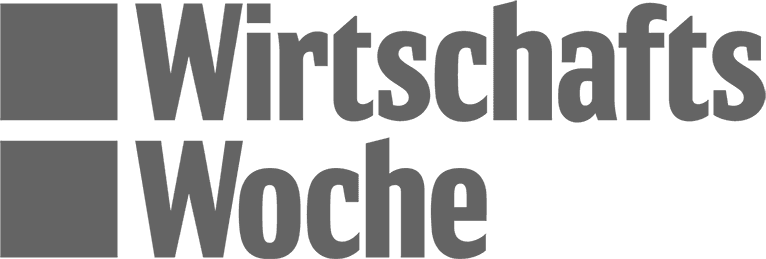

RECOMMENDED BY








GET 10 % OFF YOUR FIRST ORDER!
Get your personal running updates with exclusive discounts, product news, training plans and tips for healthy running - straight to your inbox. 10% discount on your next order.
SERVICE
ABOUT US
© 2025 True Motion Running GmbH

